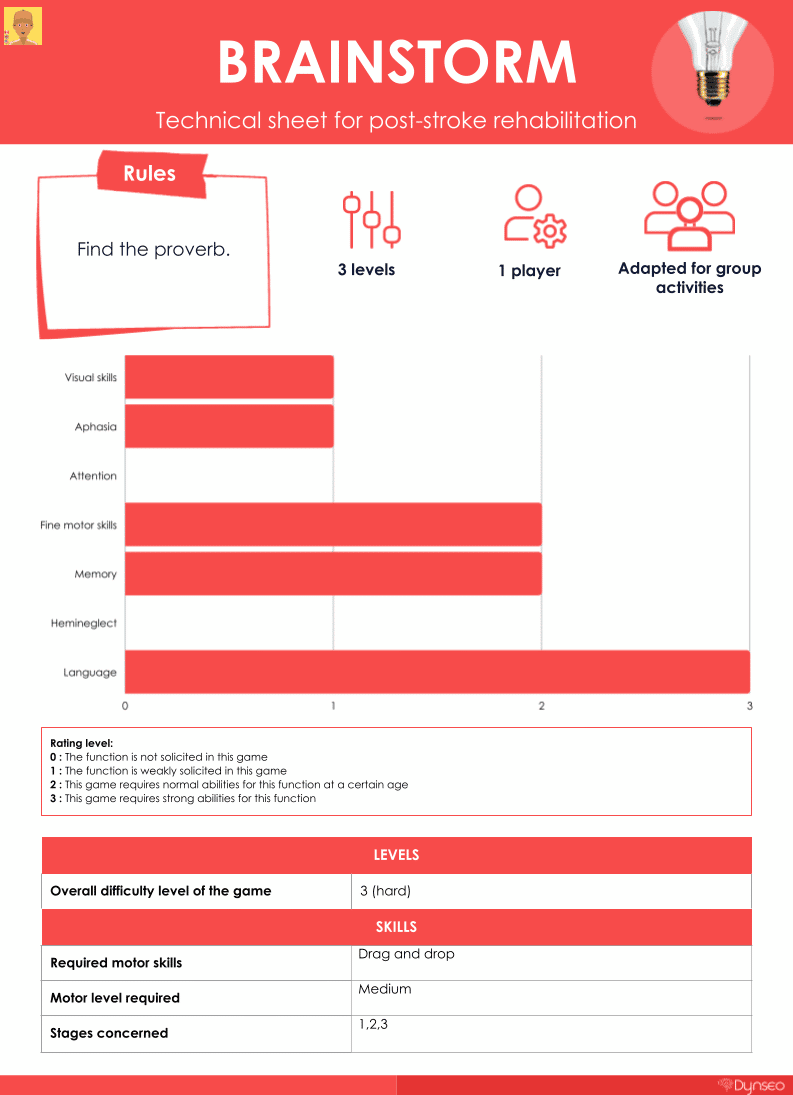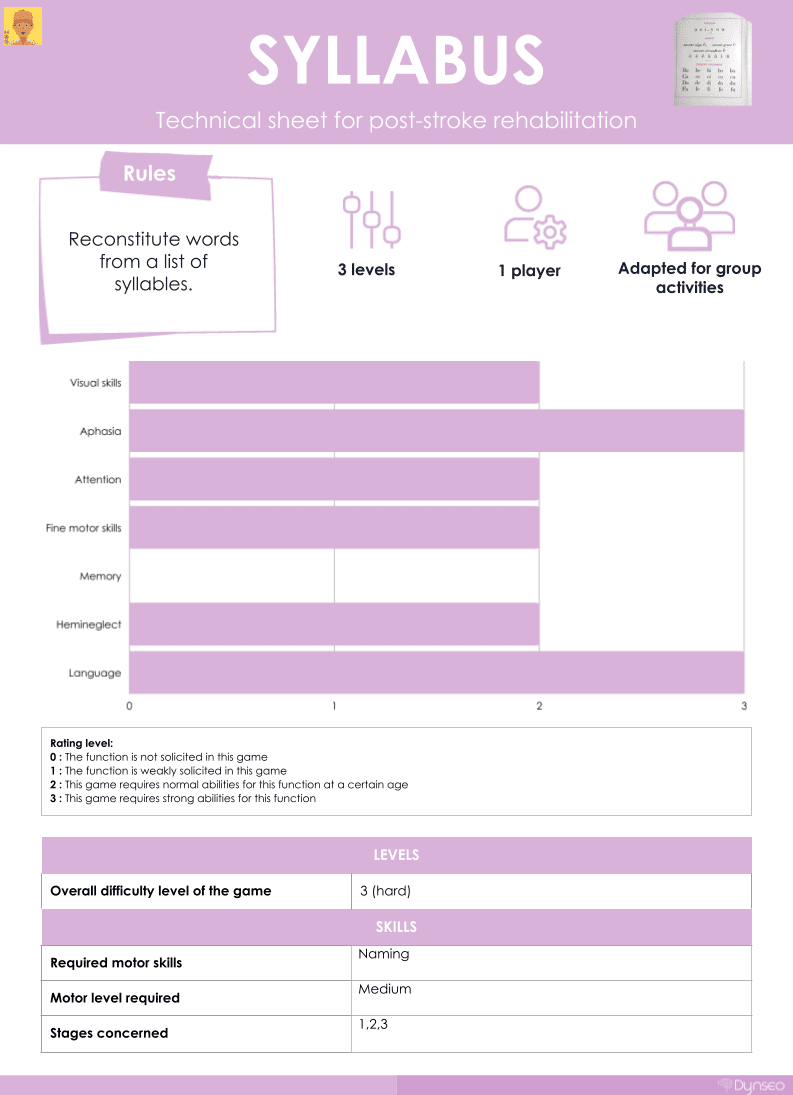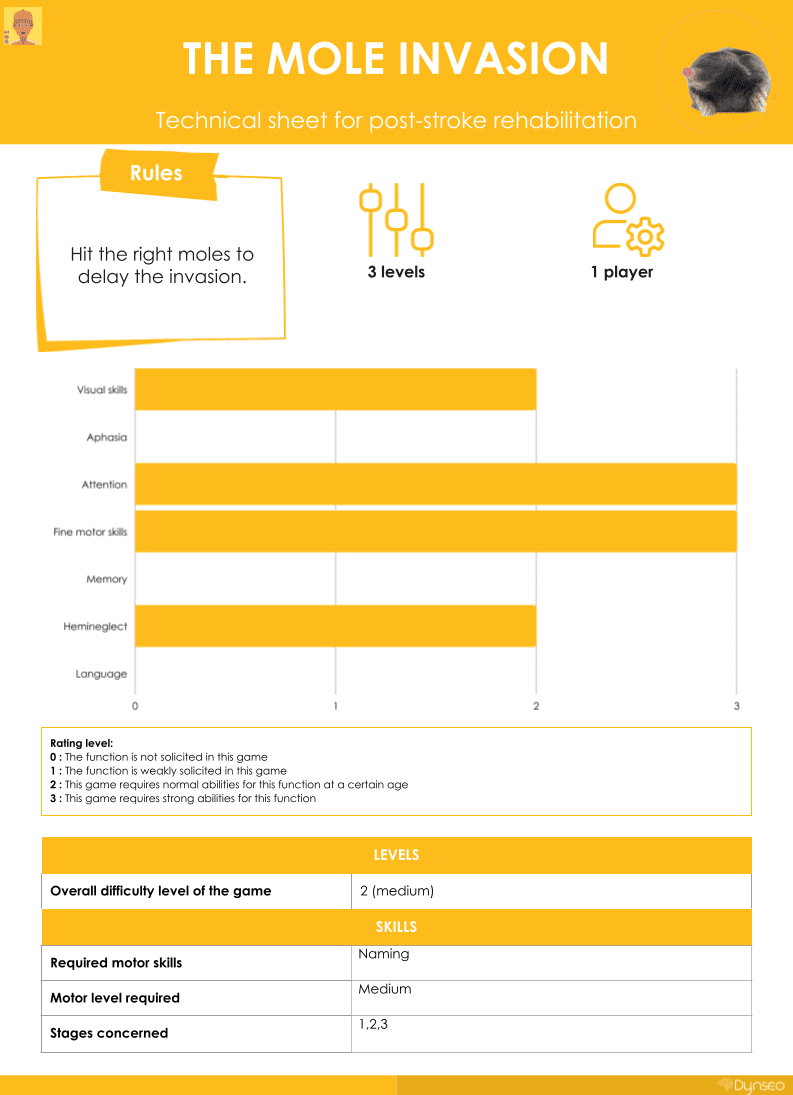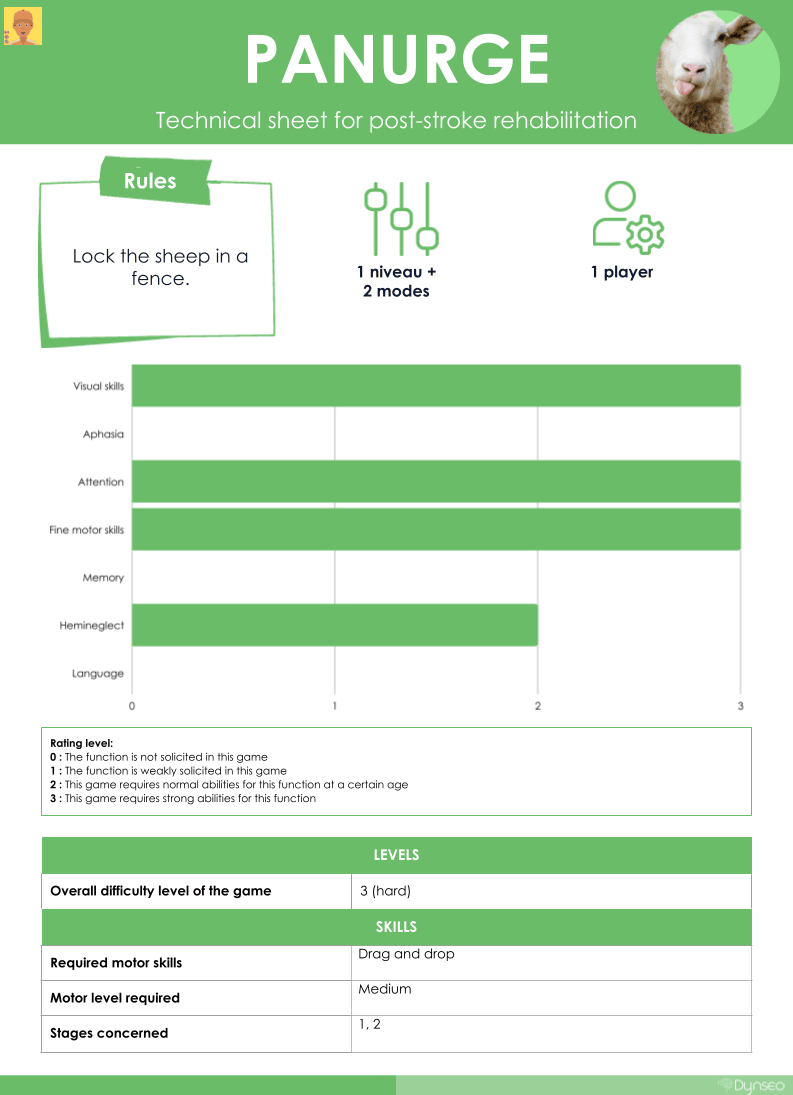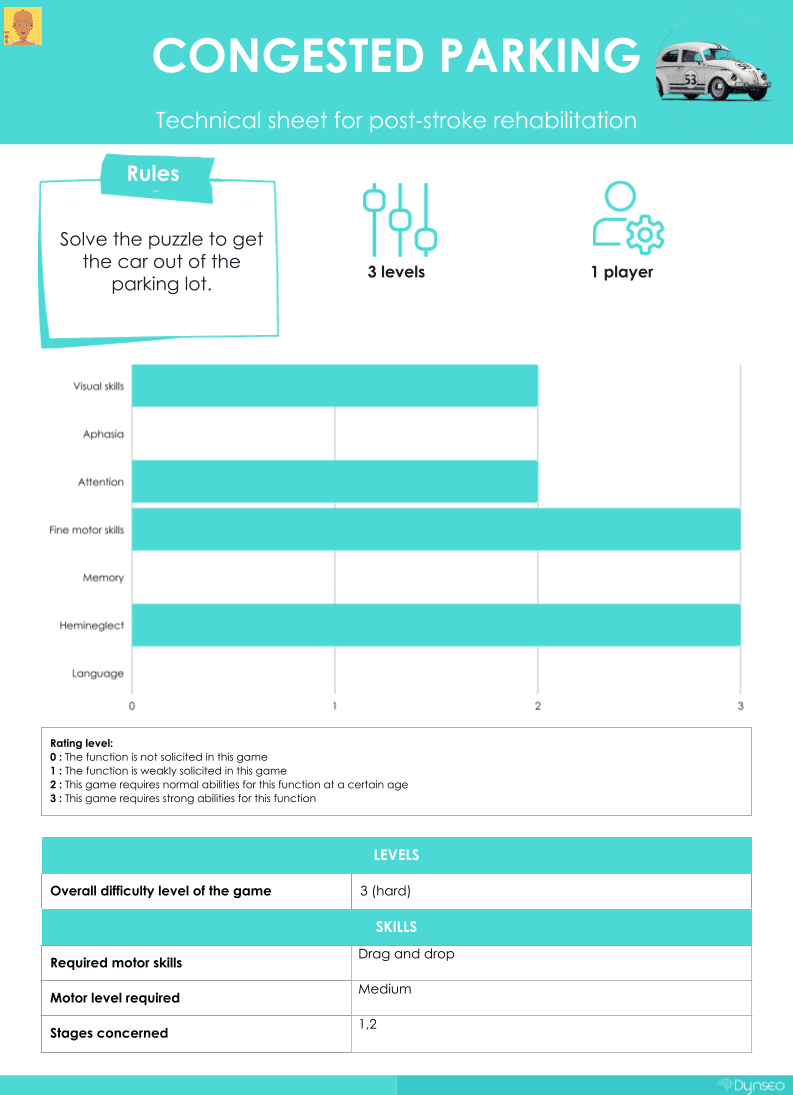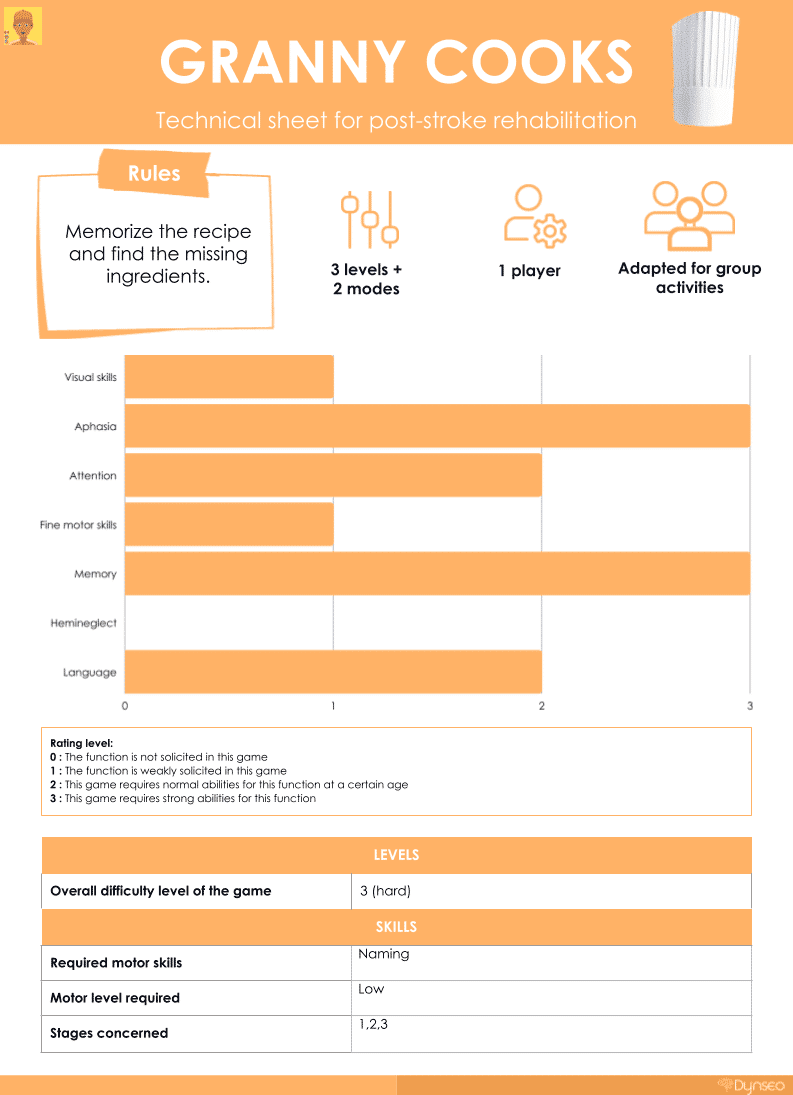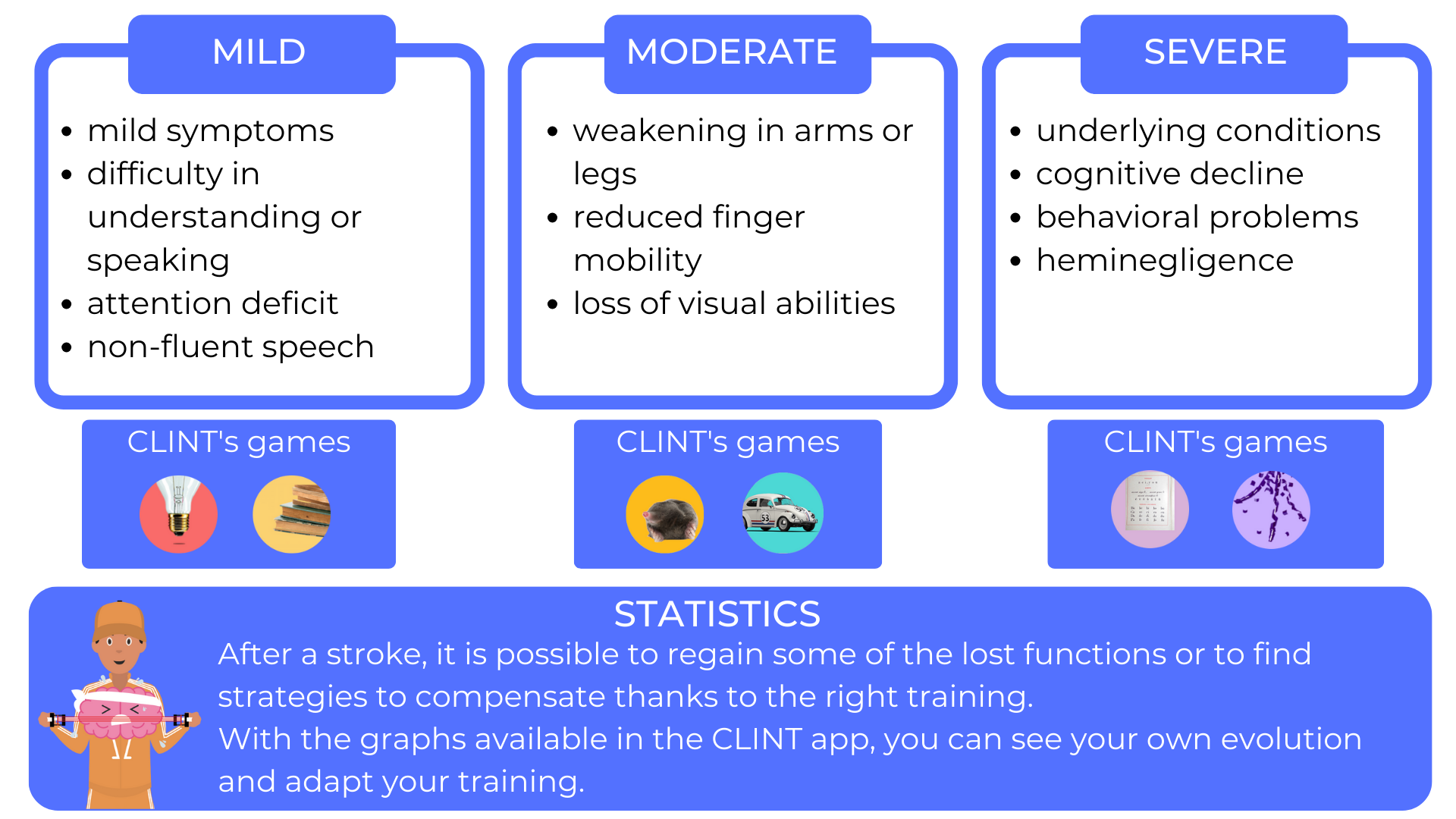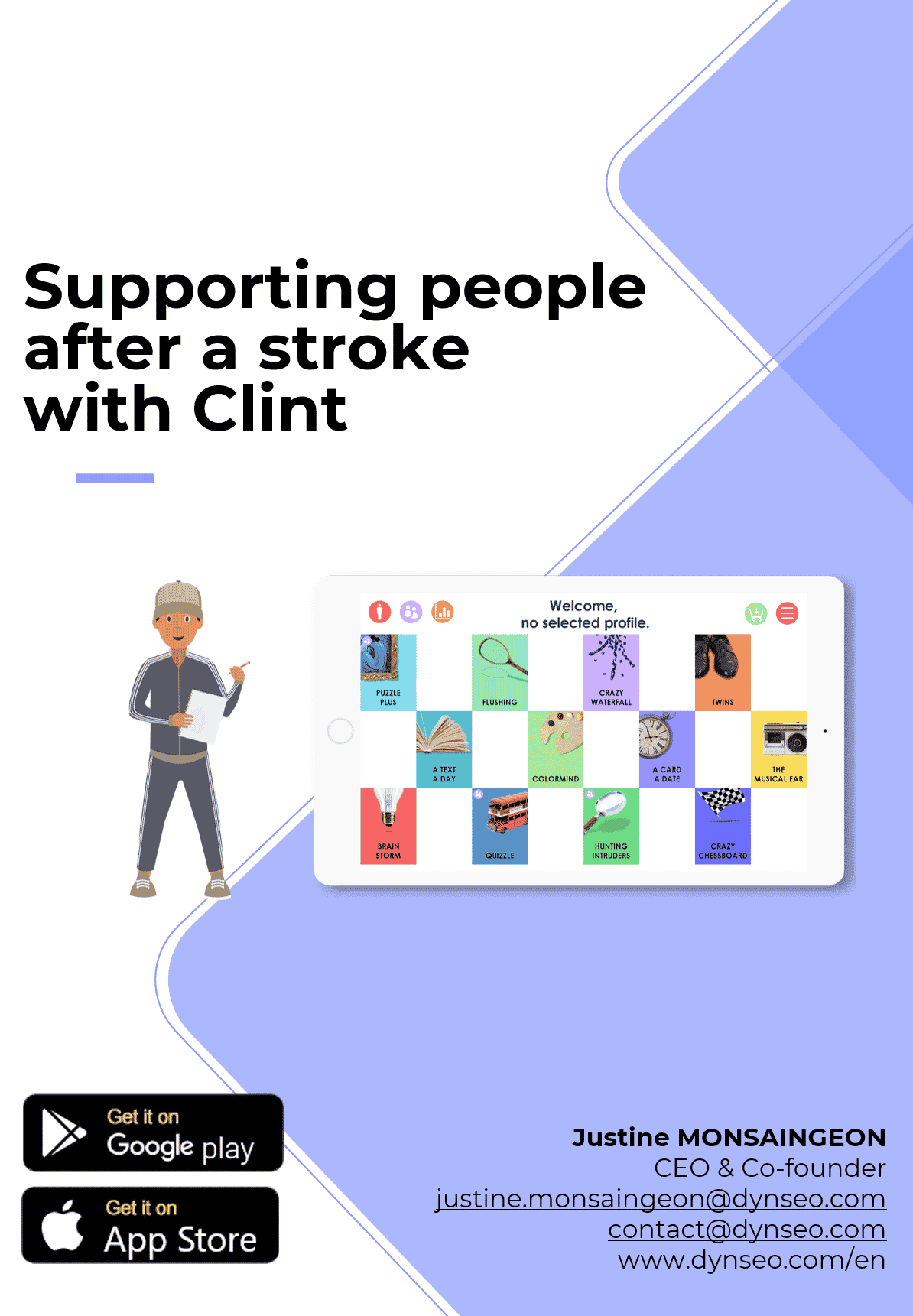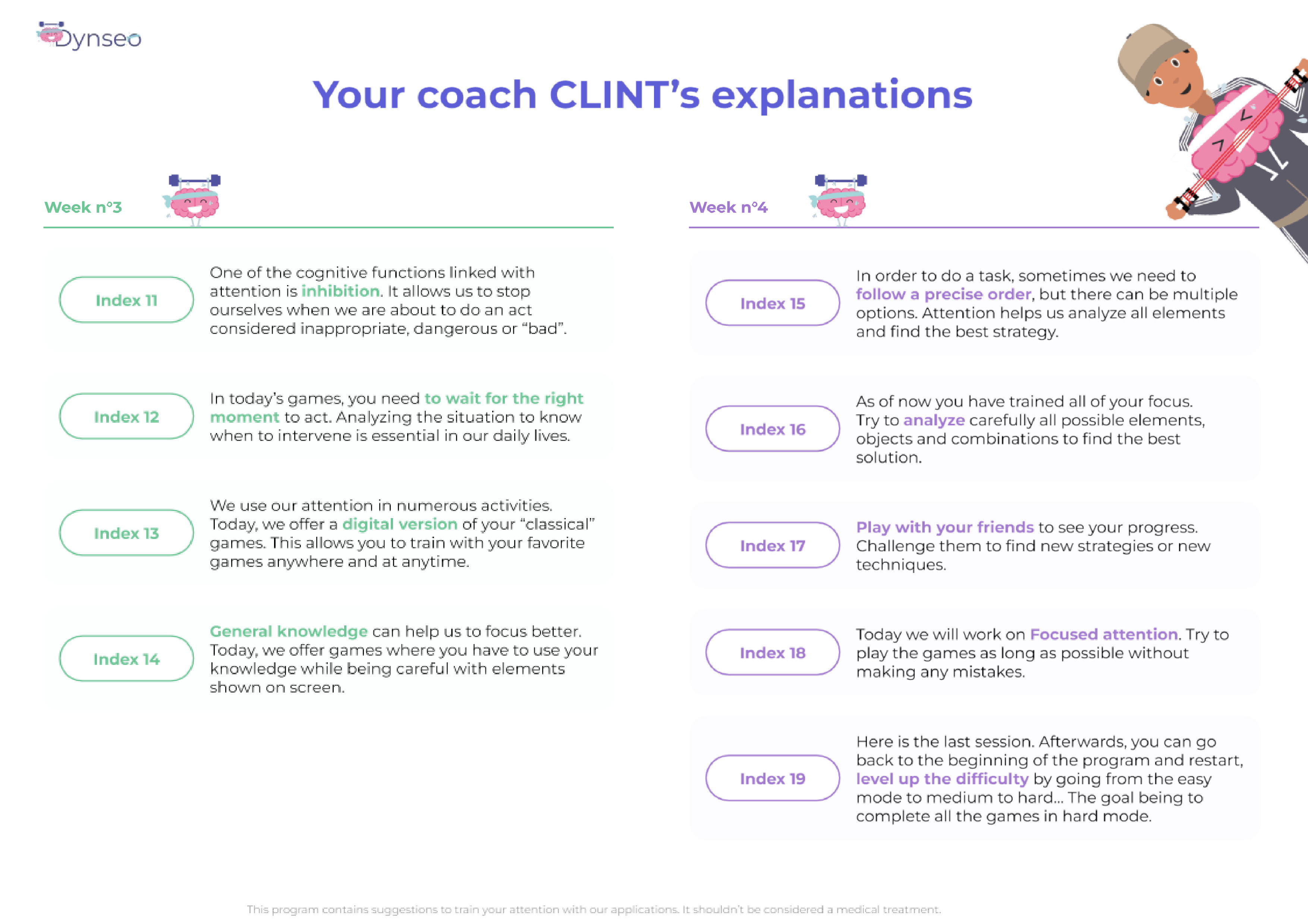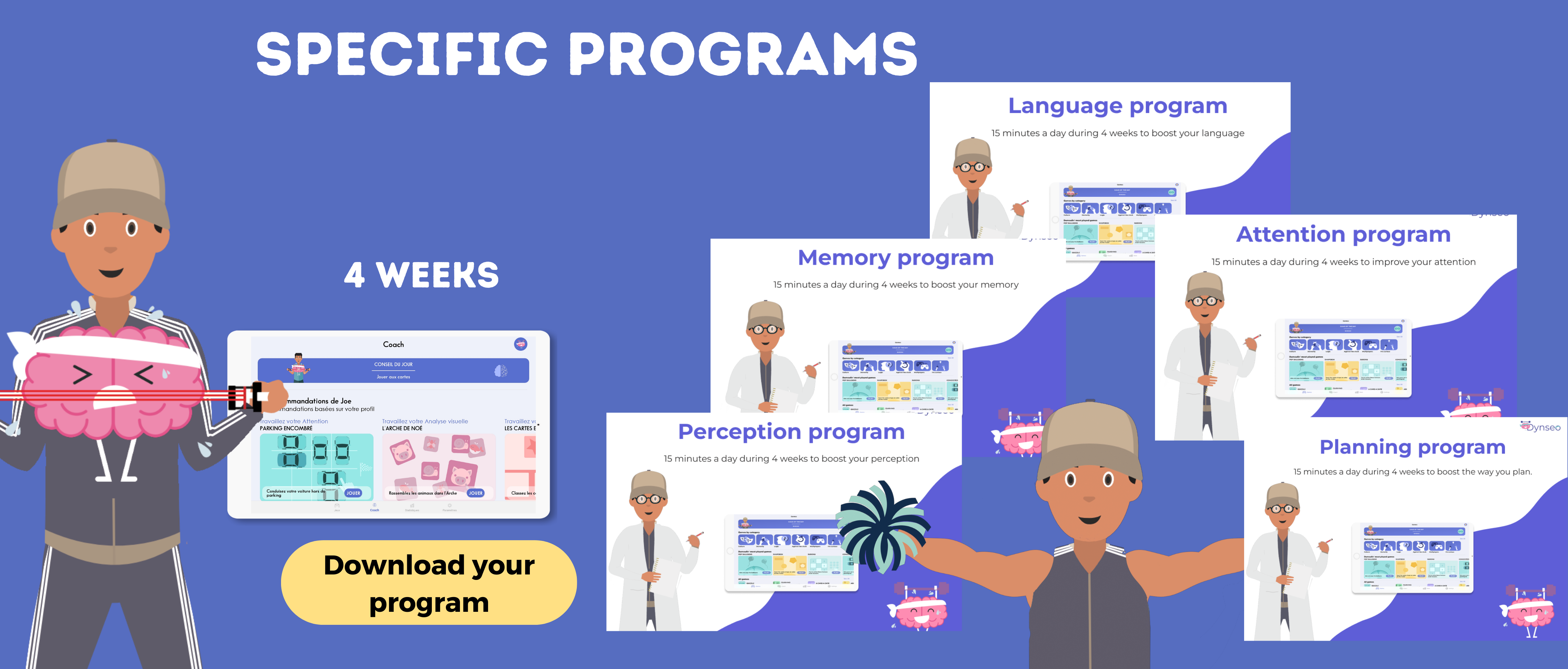Dynseo proposes
Stroke with CLINT, your brain training coach
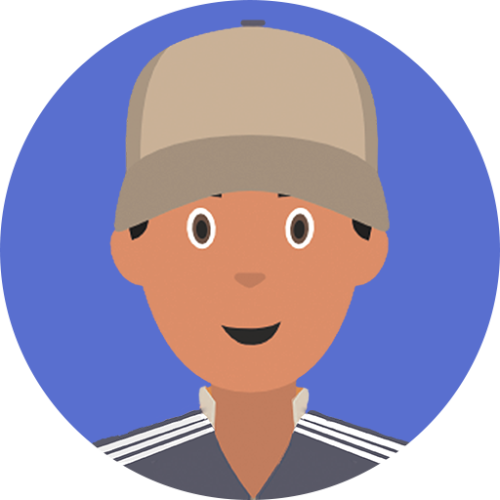
The Dynseo team is very involved in helping people who have suffered a stroke. That’s why our Clint program helps stimulate the brain in people after a stroke.
With over 30 games already available, players use their language, organization, and other cognitive functions. Clint goes everywhere with you, as the app doesn’t need Wi-Fi to work (Wi-Fi required only for updates).
Today, Clint accompanies people who suffered a stroke through their speech therapists, occupational therapists, psychologists in the office or through their caregivers (professionals or family). All professionals who wish to subscribe to the Clint app can benefit from a web monitoring platform. It is therefore possible to see the evolution and the improvement of the persons to personalize their care.
MINOR Stroke
Stage 1
Difficulty in understanding
Attention deficit
Non-fluent speech
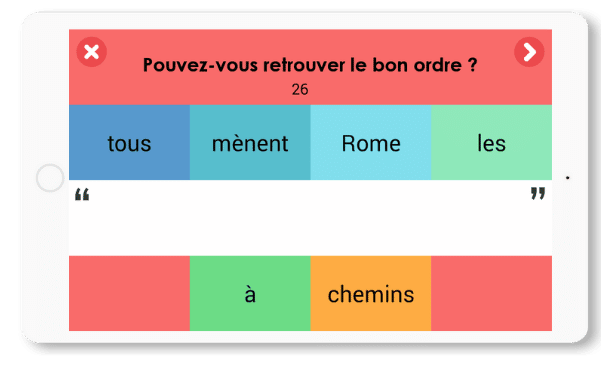
MODERATE Stroke
Stage 2
Weakening in arms or legs
Reduced finger mobility
Loss of visual abilities
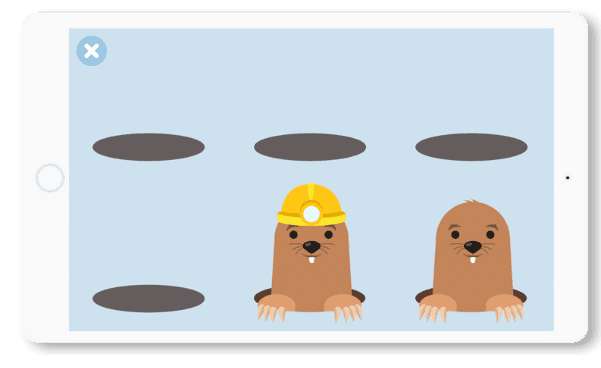
SEVERE Stroke
Stage 3
Cognitive decline
Behavioral problems
Heminegligence
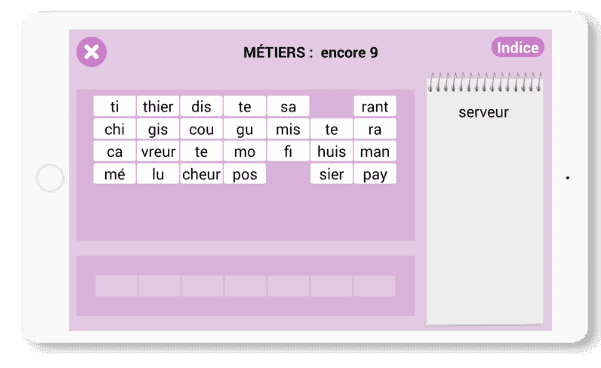
Did you know that more than 13.7 million people suffer from stroke every year?
A stroke is a cerebral vascular accident that can have different causes (ischemic stroke, hemorrhagic stroke or transient ischemic attack) and different symptoms. DYNSEO accompanies you here in your post–stroke cognitive rehabilitation, by presenting its brain training application CLINT, which will allow you to stimulate your different cognitive functions: language, organization and visual perception.
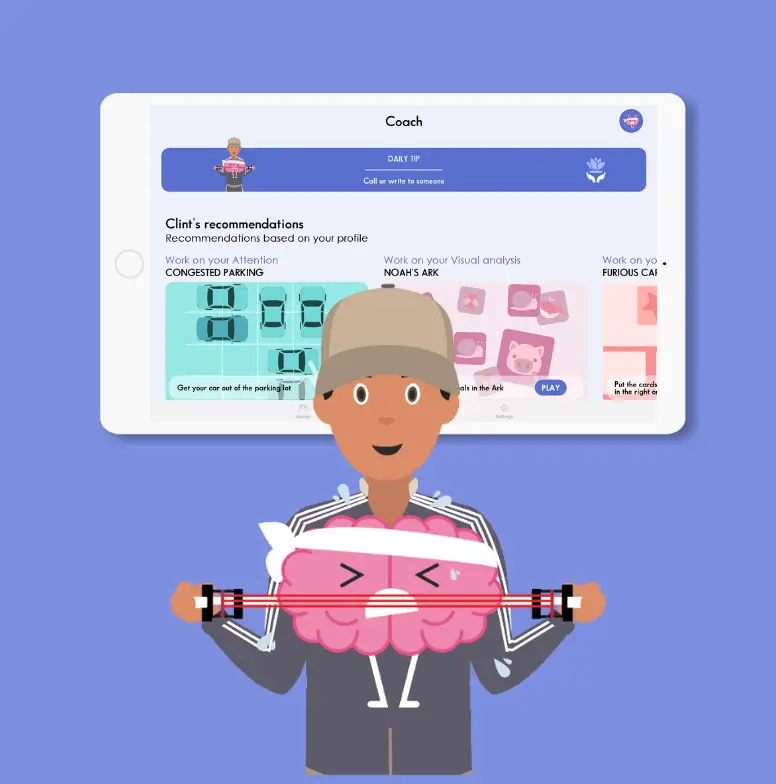
CLINT, the app for post-stroke people
Dynseo has developed an application adapted to people wishing to do rehabilitation following a stroke: CLINT.
CLINT can be used at home, with the help of a companion or independently, as well as during sessions if you are being followed by a professional. You don‘t need a wifi connection to use the CLINT app, which means it can be used anywhere and anytime.
CLINT offers a program with more than 30 cognitive games aimed at working on various cognitive functions such as attention, memory, language and organization, among others. Each game offers three levels of difficulty to best suit the user‘s skills.
Following a stroke, it is quite possible to recover your cognitive functions by choosing activities adapted to your needs. Stroke is a stroke that affects different cognitive functions, but with targeted cognitive stimulation, it is possible to rehabilitate these functions. The type of activity therefore depends on the cognitive functions affected and the severity of the stroke. The Clint Brain Training Program adapts to each post–stroke situation and can thus help improve the different functions affected in different types of stroke.
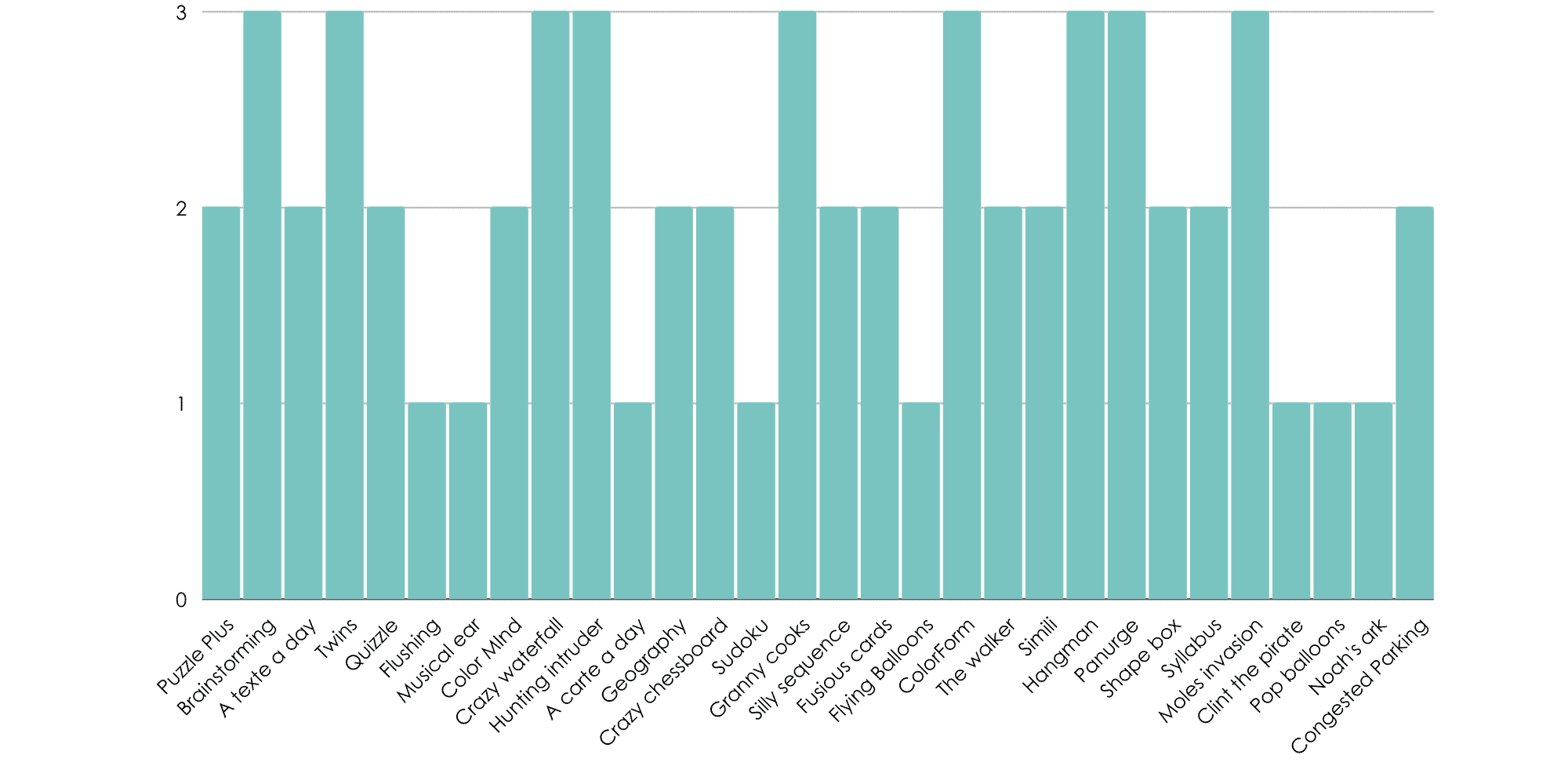
Adaptation of Clint games to the needs of stroke
IN THIS GUIDE
01.
Games adapted according to the form of stroke
A stroke can vary in severity and impact depending on its nature and extent in the brain, which can lead to consequences ranging from mild to severe, requiring care and rehabilitation adapted to each level of severity.
02.
Areas of fragility in stroke
A stroke can affect various aspects of life, including motor skills, speech, cognition, emotion, and independence, often requiring multidisciplinary rehabilitation to promote recovery and adaptation to these changes.
03.
Stroke and behavior
Following a stroke, changes in the affected brain regions can cause behavioral alterations such as irritability, depression or impulsivity, requiring psychological support and medical follow–up for better management of these disorders.
04.
BONUS: CLINT’s training programs
Personalized training programs are available to support you in your rehabilitation, including practical tips and explanations on the importance of the games in the Clint app.
01.
GAMES ADAPTED TO STROKE
Discover the most suitable games for people having suffered a stroke with the CLINT program.
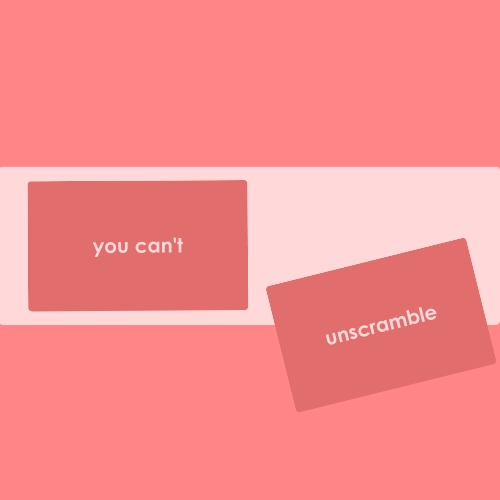
Brainstorming
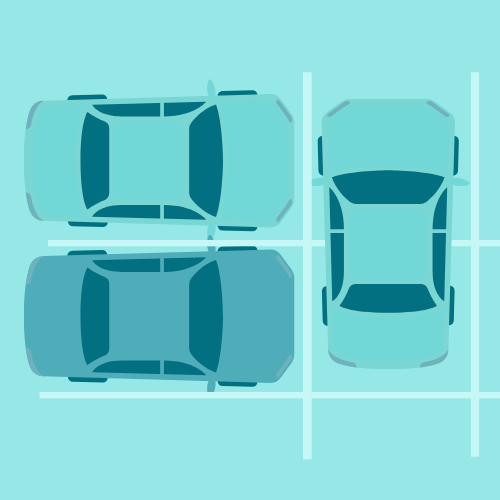
Congested Parking
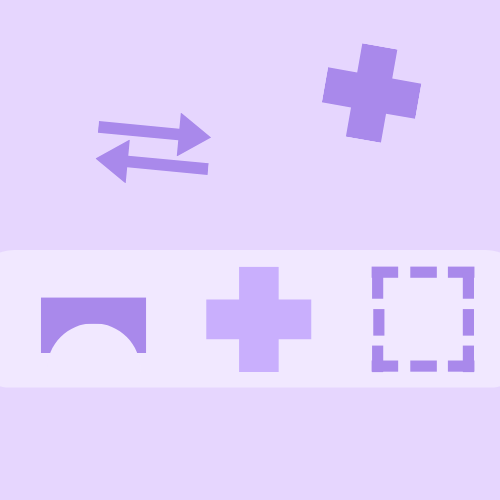
Crazy Waterfall
FORMS OF STROKE
Working with a person with a stroke is possible with activities adapted to their needs. Stroke is a cerebral vascular accident that affects different cognitive functions, but with targeted stimulation it is possible to rehabilitate these functions. The type of activity therefore depends on the affected cognitive functions and the severity of the stroke. Joe can be used in every post-stroke situation and can be adapted to each individual.
Joe can help improve the various functions affected in the different types of stroke.
Mild stroke (stage 1)
Symptoms are very mild and recovery is rapid.
In this case, you can use the difficult game levels and the person can also use the application independently.
Brainstorming
Put the words in the right order to find the proverb.
With this game you can stimulate mainly the language.
The person must read and understand the words and then analyze them in context and mentally associate them with other words: with this process, you can stimulate syntax.
Once all the words are understood, the person must try to put them in the right order to organize the sentence correctly.
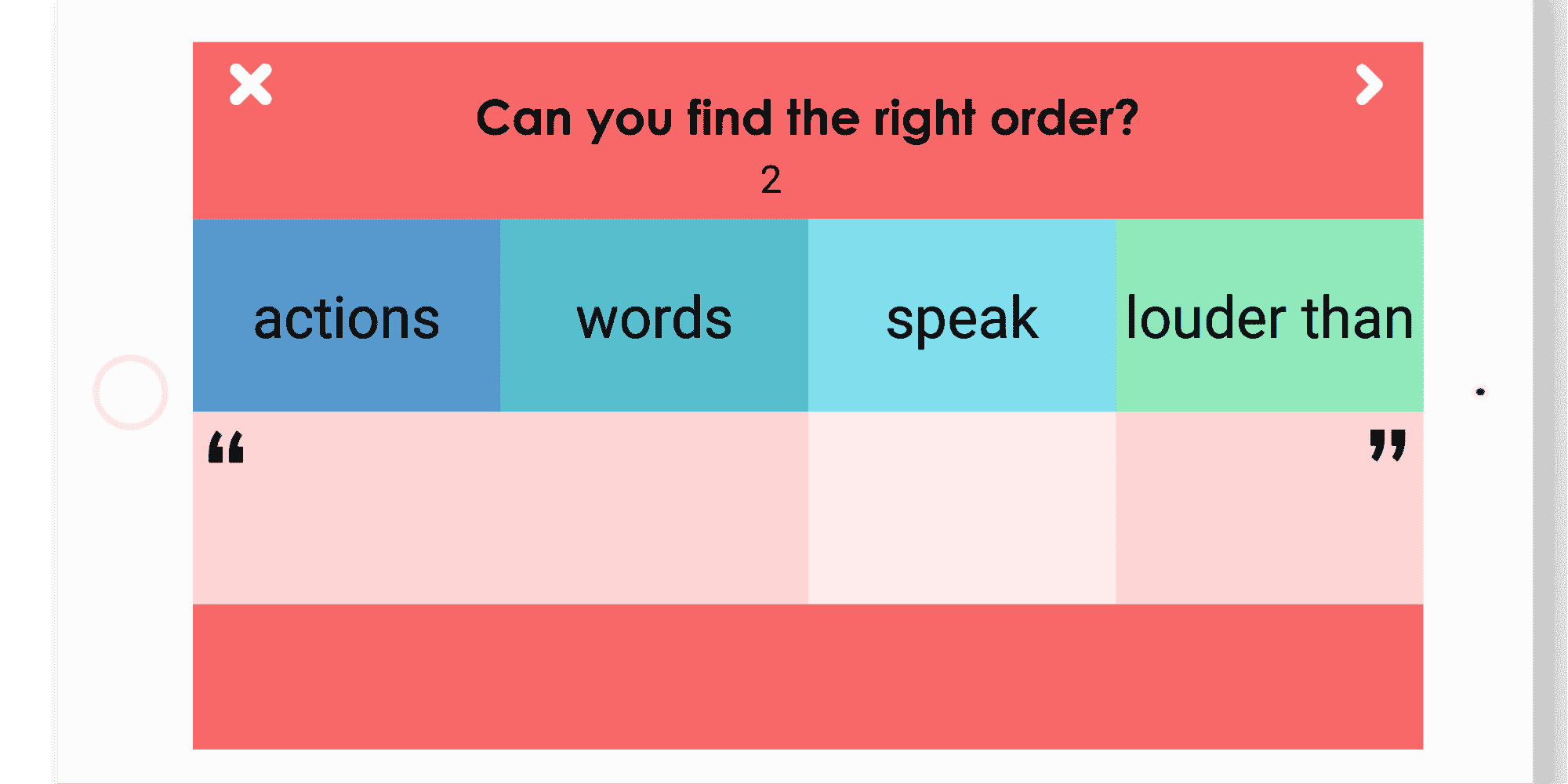
In addition, this game stimulates other functions such as finger mobility (sliding the words into the right place), mental imagery (visualizing the order of the words in the mind) or memory (if the person knows and remembers the proverb).
Moderate stroke (stage 2)
Symptoms can be more varied and also affect motor skills (weakness in the arms or legs, difficulty in moving the fingers).
The person requires rehabilitation to regain independence.
At this point, you can use the games at the medium level.
The Mole Invasion
Tap on the 3 types of moles in different ways according to the instructions that appear on the screen.
With this game, you can first and foremost stimulate attention.
The person must use visual scanning skills to quickly locate the moles. They must then analyze the image to determine which mole appears on the screen. Finally, he/she must associate the type of mole with the action to be performed.
This association implies an adaptation to the instruction. The person is asked to activate or inhibit his or her gesture according to different stimuli: touching the moles once without helmets and touching the moles twice with helmets or not touching the moles with the glasses.
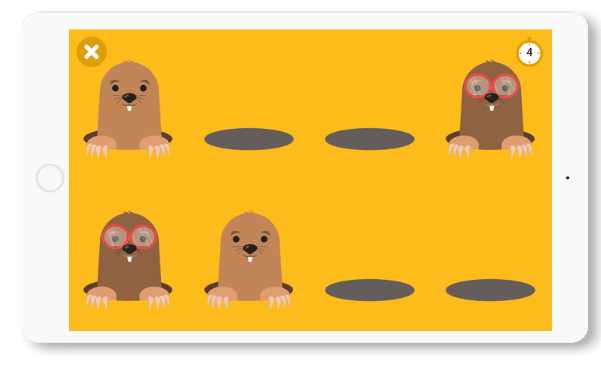
With this game, you also stimulate finger mobility as the person has to move their fingers as fast as possible to reach the moles.
Congested Parking
Move the cars in the parking lot to get the yellow car out.
With this game, you can stimulate all the cognitive functions essential to regain independence.
The person must use visual perception skills to analyze the position of the cars, their size and orientation so that they can move them. Then, he or she must create mental images to imagine the possible movements of the cars and their consequences.
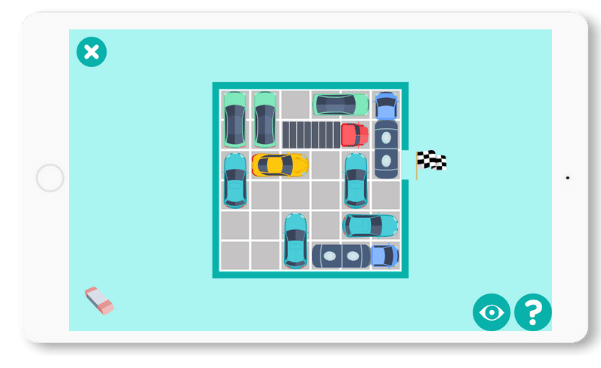
In addition, to solve this puzzle and find the right sequence of moves to get the yellow car out, you also stimulate logic and planning.
Finally, to move the cars, the person has to slide his finger on the screen: you can stimulate finger mobility and eye-hand coordination.
Severe stroke (stage 3)
At this stage, there is a comorbidity of symptoms that may affect cognitive functions such as movement or behavior.
In this case, you can use the games at the easy level.
Syllabus
Find the words from the syllables.
With this game, you can stimulate different language functions.
To perform this game, the person must use his or her meta-phonological skills. They must read, understand and memorize the syllables on the screen. Then, they must create mental images to imagine the different possible combinations.
To create words from syllables, the person must be able to perform phonemic synthesis.
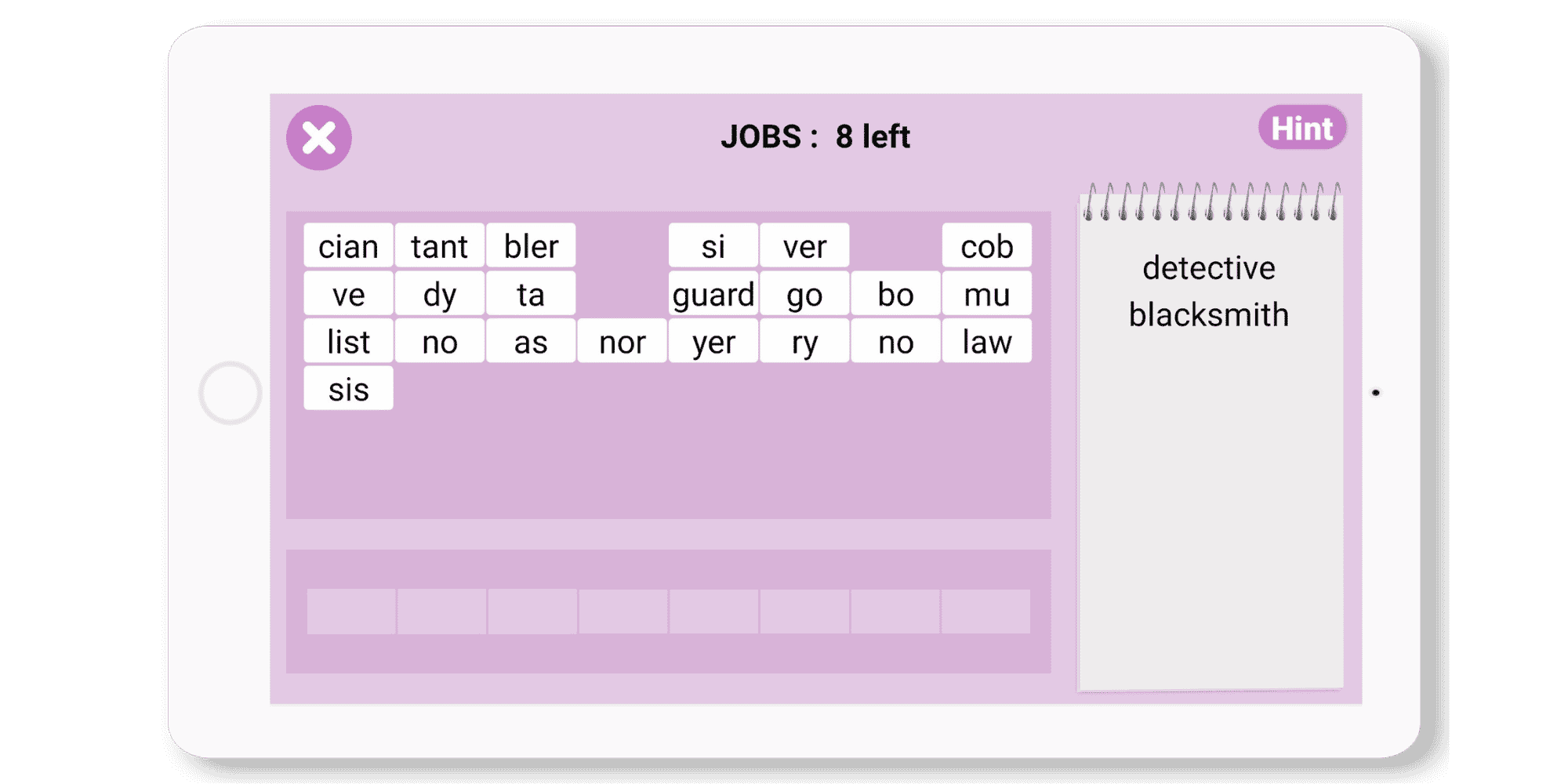
In addition, you are stimulating visual skills as the person must use visual scanning to analyze all the syllables. They must also use this skill to identify the different syllables that make up the word they are thinking about.
Finally, to select the syllables, you can stimulate eye-hand coordination and finger mobility.
Crazy Waterfall
Find the differences between the proposed symbol combination and the model.
With this game, you can stimulate attention as the person has to compare a sequence to a model within a given time.
To recognize the differences between the combination and the model, you can stimulate visual perception. The symbols present in the game have no precise meaning, so the person must really analyze the characteristics of each image.
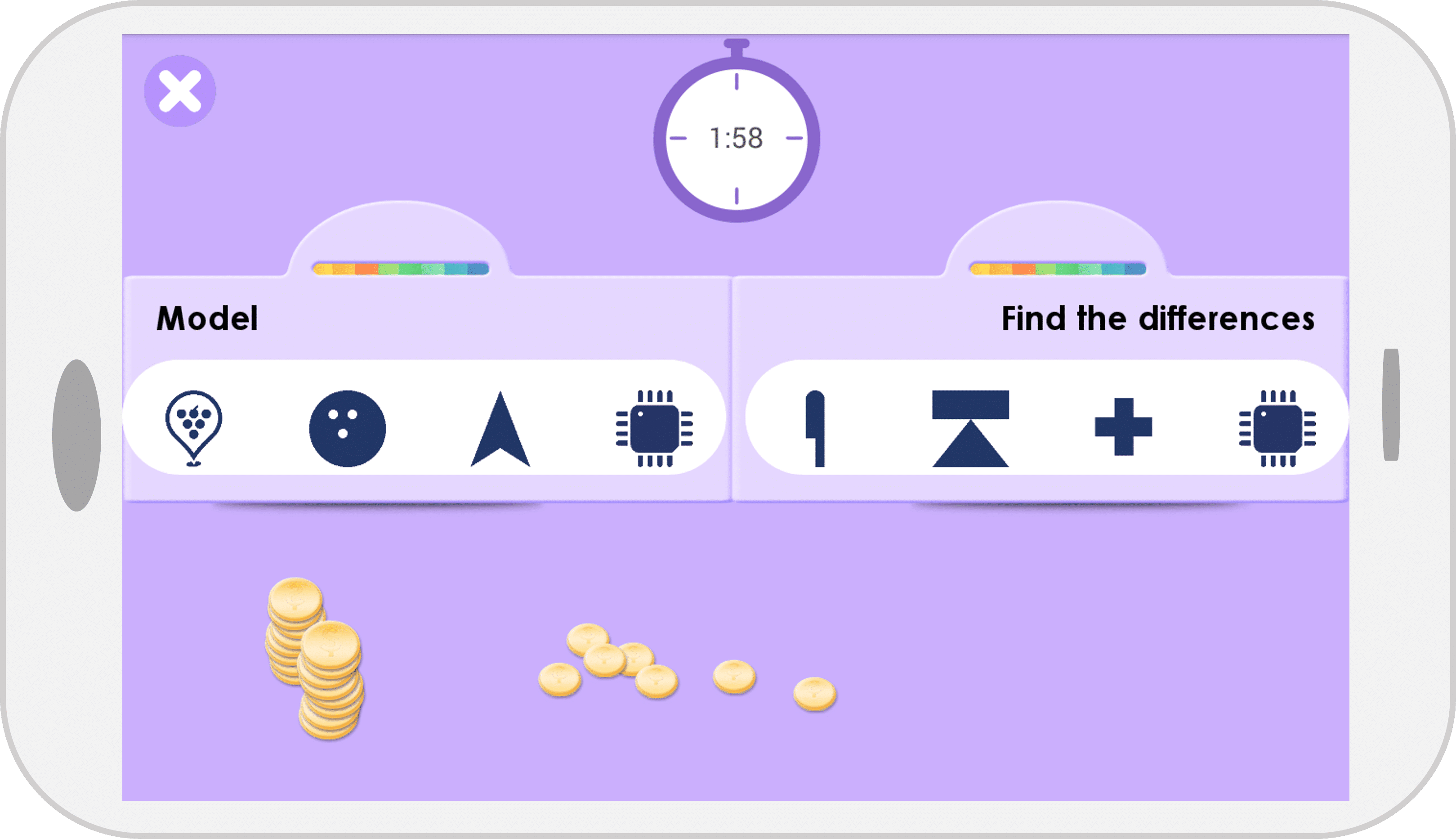
Finally, with this game, you can stimulate eye-hand coordination since the person has to move his finger precisely to touch only the wrong images.
The combination to be corrected and the model are in two parts of the screen so this game can be very useful when the person suffers from hemineglect.
Clint can be used in all stages following a stroke.
The program can be used directly with a professional for a quick and efficient cognitive stimulation. It can be used at home between two sessions to reinforce skills (the professional can prescribe sessions further apart in time and carry out controls). Finally, it can be used at home independently, if the person has recovered cognitive functions, to maintain them over time.
Clint therefore accompanies people who have suffered a stroke and health professionals throughout the therapeutic project.
02.
AREAS OF FRAGILITY IN STROKE
A stroke can have a significant impact on various aspects of life, including mobility, communication, cognitive abilities, and interpersonal relationships.
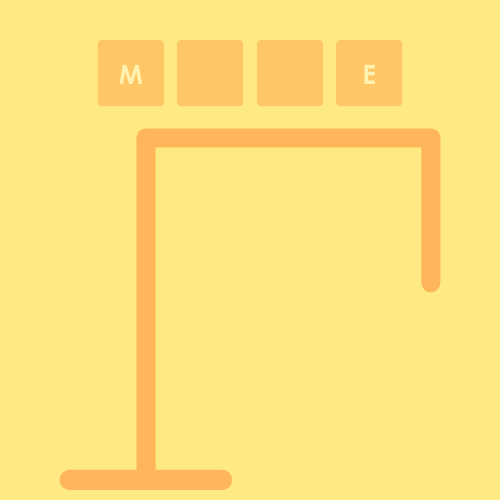
The Hangman
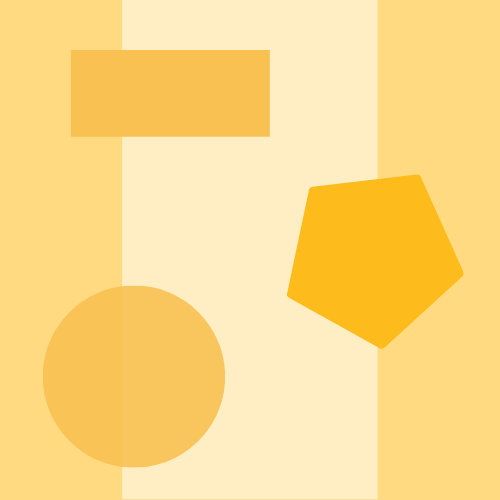
Shape Box
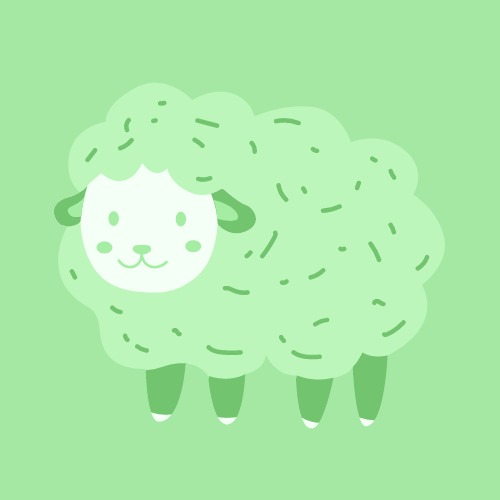
Panurge
SYMPTOMS AFTER STROKE
After a stroke, a person may have difficulty with language, visual perception, or movement.
Clint accompanies you in all affected areas with specific and adapted games.
Language
From a language level, the person may have difficulties with input language (comprehension problems) or with output language.
In this case, they may have difficulty finding certain words. They may also reverse words and name objects with another word or fail to organize a sentence correctly.
A Text a Day
Find each day a different excerpts from English literature to read.
With this game, you can stimulate the reading of texts. You can therefore work on verbal fluency and reading rhythm.
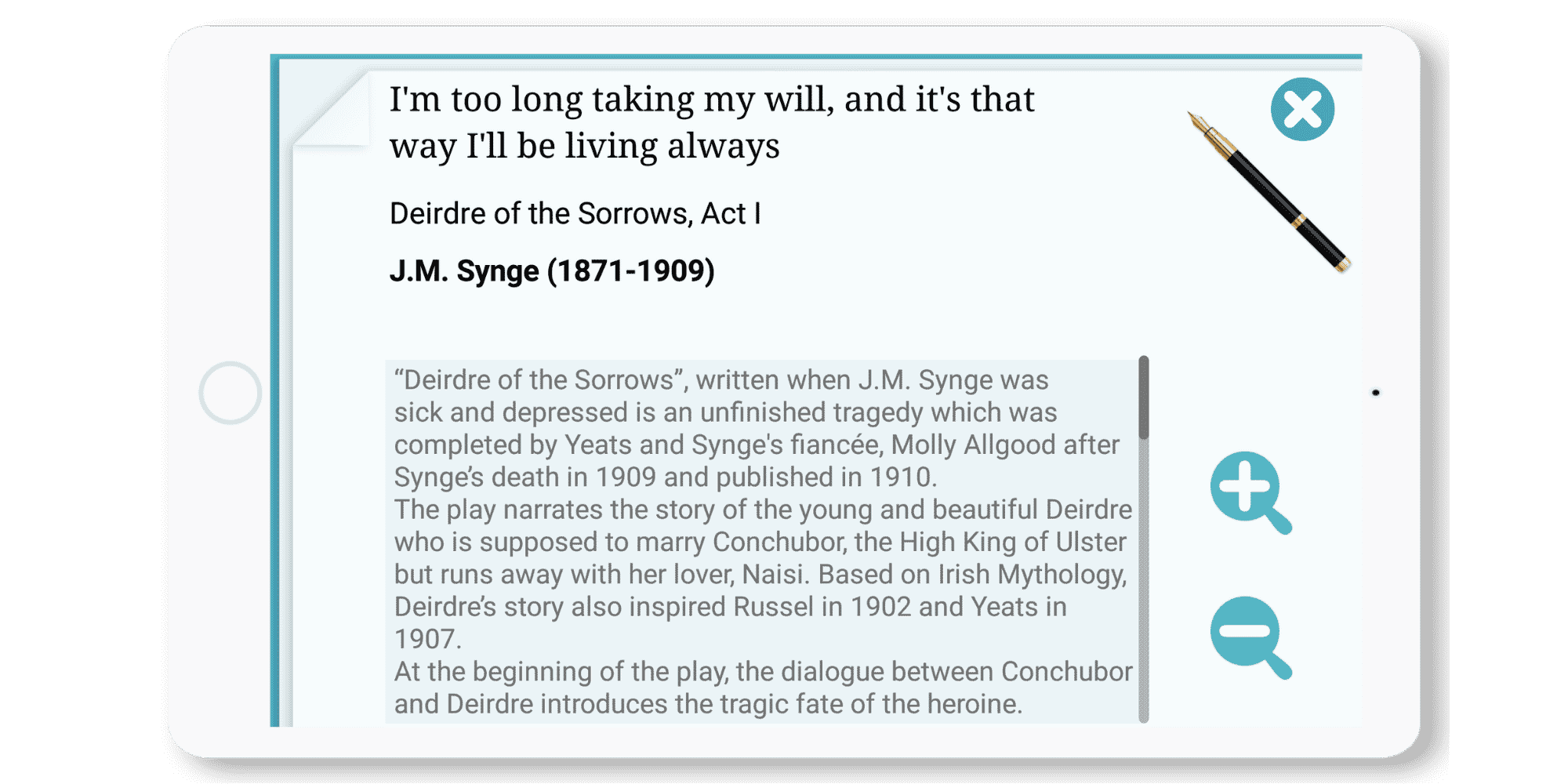
This game is different from the others in the application because it does not directly ask to perform a task or to solve a puzzle. But it can still be an activity to stimulate the language of a person after a stroke.
At the end of the reading, you can ask the person questions to make sure they understand the text. You can also ask them to summarize to stimulate phrasing in a logical way.
The Hangman
Find the hidden word with the available letters in the classic hangman game.
This game is simple in concept, but very useful for language stimulation.
The person must use his or her semantic memory to think of words of the same length and with the same letters as the word to be found.
To test their hypothesis, they must select the letters present and use the feedback to confirm or change their hypothesis.
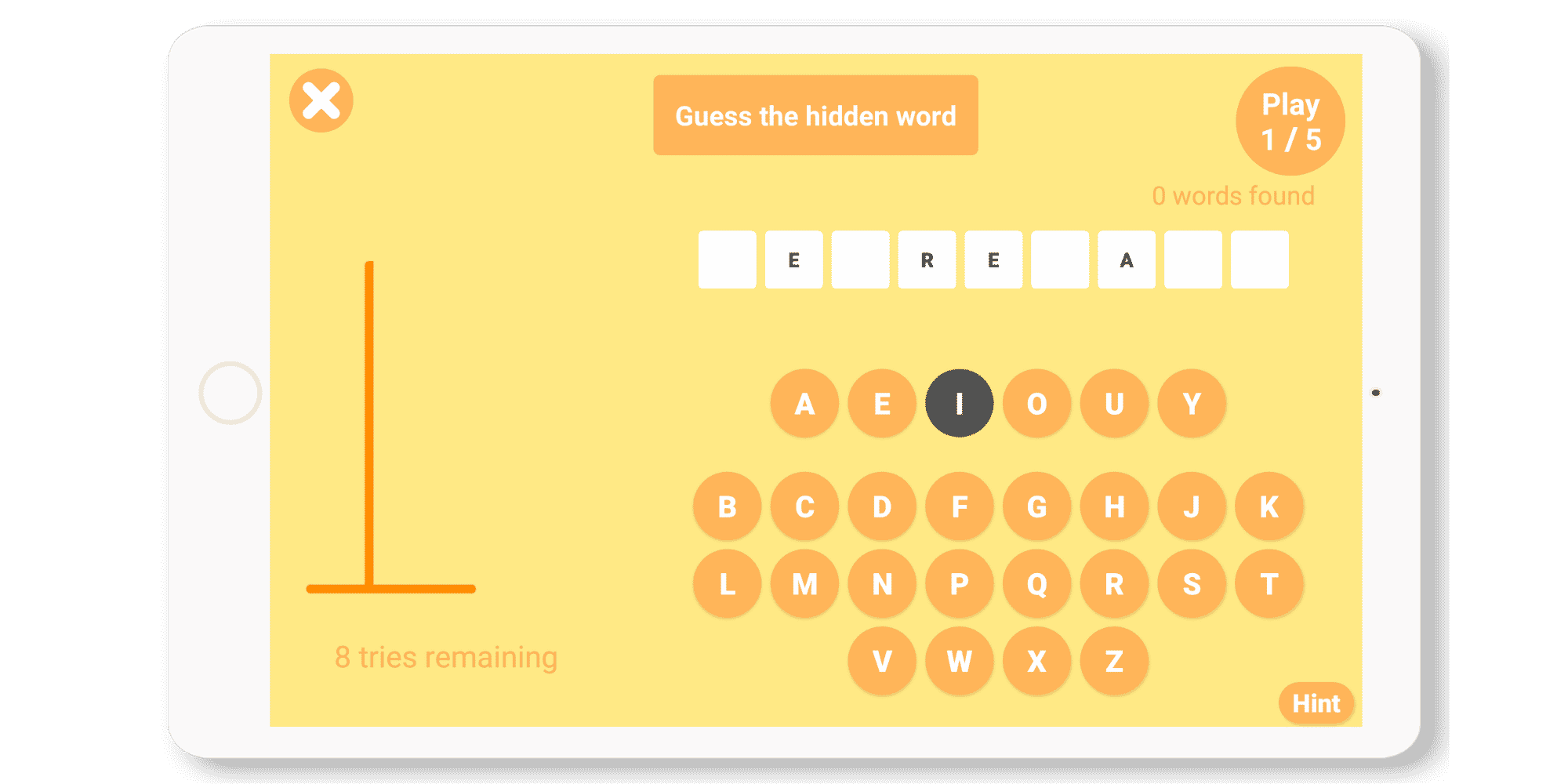
As the letters fill in the empty spaces, the person then uses their meta-phonological skills and lexical access to think of possible words.
In addition, you can stimulate visual scanning to look for letters and finger mobility to click on them.
Visual skills
On a visual level, the person may have difficulty seeing parts of objects.
They may have a part of their visual field inaccessible, which is called hemineglect, or difficulties in recognizing the characteristics of objects.
These disorders can affect object recognition and use, as well as orientation.
Shape Box
Find the shape or color according to the model.
With this game you can stimulate different visual skills.
To recognize and identify the shape or color, the person must use visual perception and appeal to his or her analytical abilities (with regard to geometric shapes and colors).
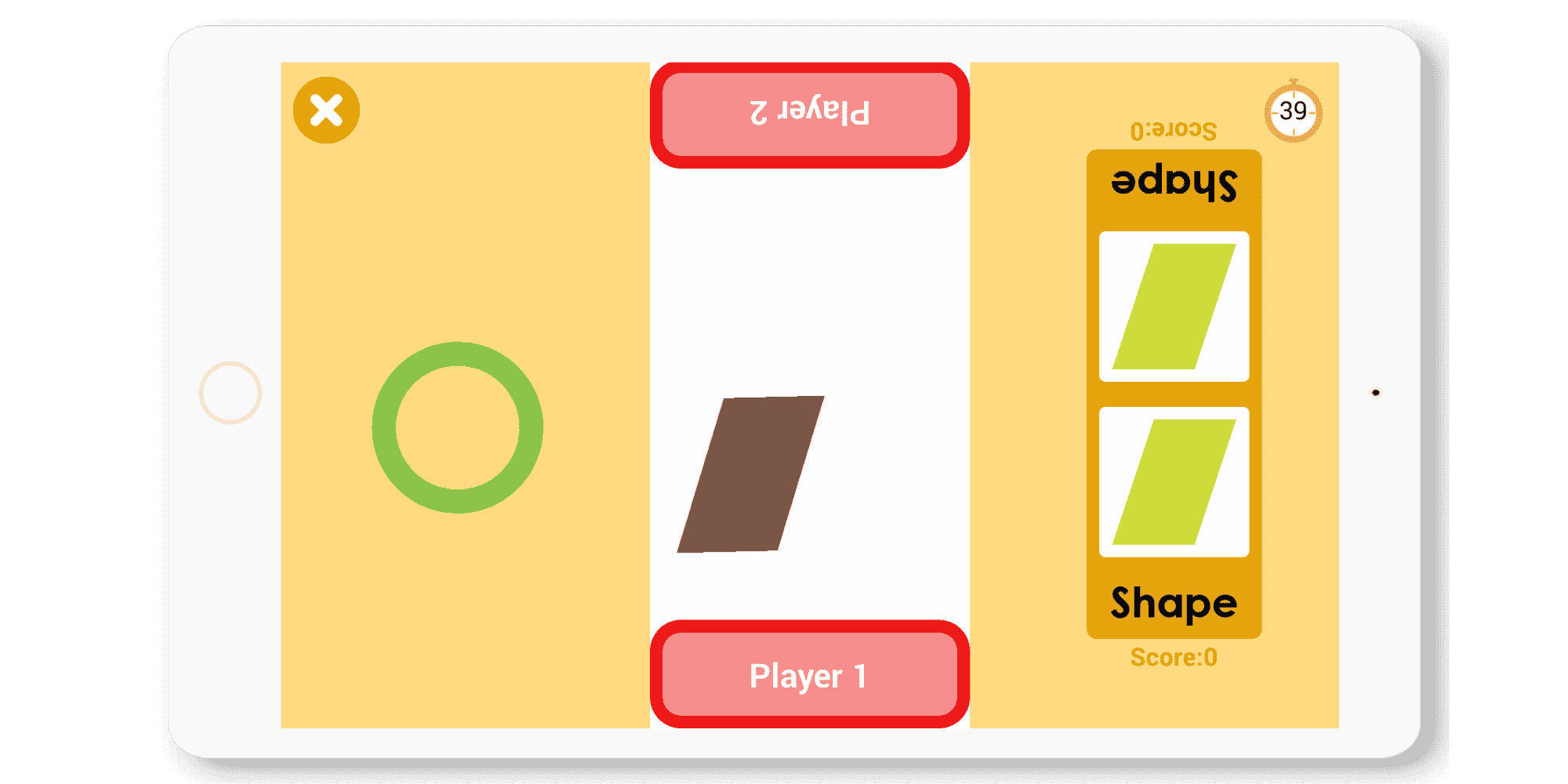
The objects move on the screen, so you can stimulate visual scanning.
In addition, objects rotate on themselves, so the person must be able to form a mental image of the object to maintain consistency of form.
Finally, thanks to this game, you can stimulate attention since once the right shape or color is found, the person must wait until the object is in the white zone to click on the red button.
This game is very useful in a situation of hemineglect because the objects move all over the screen.
Puzzle Plus
Reconstruct the puzzle with the available pieces.
With this game, you can stimulate global visual analysis since the person must have the final image in mind and analyze the details of the pieces.
To place the pieces in the right place, you can stimulate the visuo-spatial construction which is based on the construction of a mental image. The person has to imagine the position of the piece according to the pieces already placed and the final image.
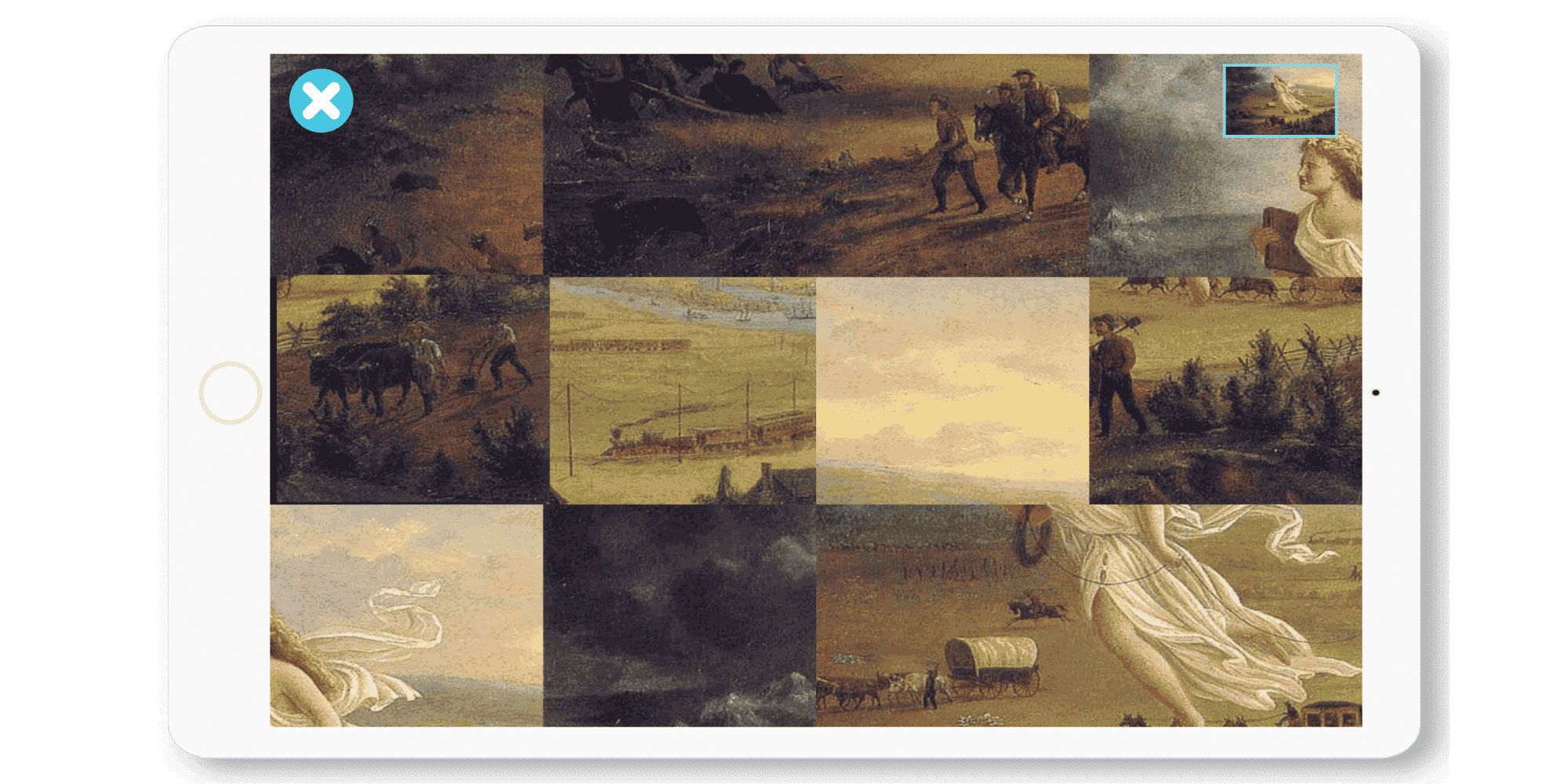
These skills are essential for orientation, so this game can be used in cases of orientation disorders.
This game can also be used in case of hemineglect, since in order to solve the puzzle, it is necessary to analyze the whole visual field.
Finally, to move the pieces, you can stimulate finger mobility as well as eye-hand coordination.
Movement
After a stroke, a person may experience paralysis or weakness in the mouth, legs, arms, or fingers.
The Clint app allows you to find different games that work on finger mobility and diction.
Noah’s Ark
Slide the animal pairs into the arch.
This game is very useful to work on finger mobility. The use of animals makes it easy to recognize the images and therefore allows this game to be used in the most severe cases of stroke.
First, you can stimulate visual scanning, as the person has to look at all the animals on the screen. In the second step, you work on the association skills to find the animal pairs.
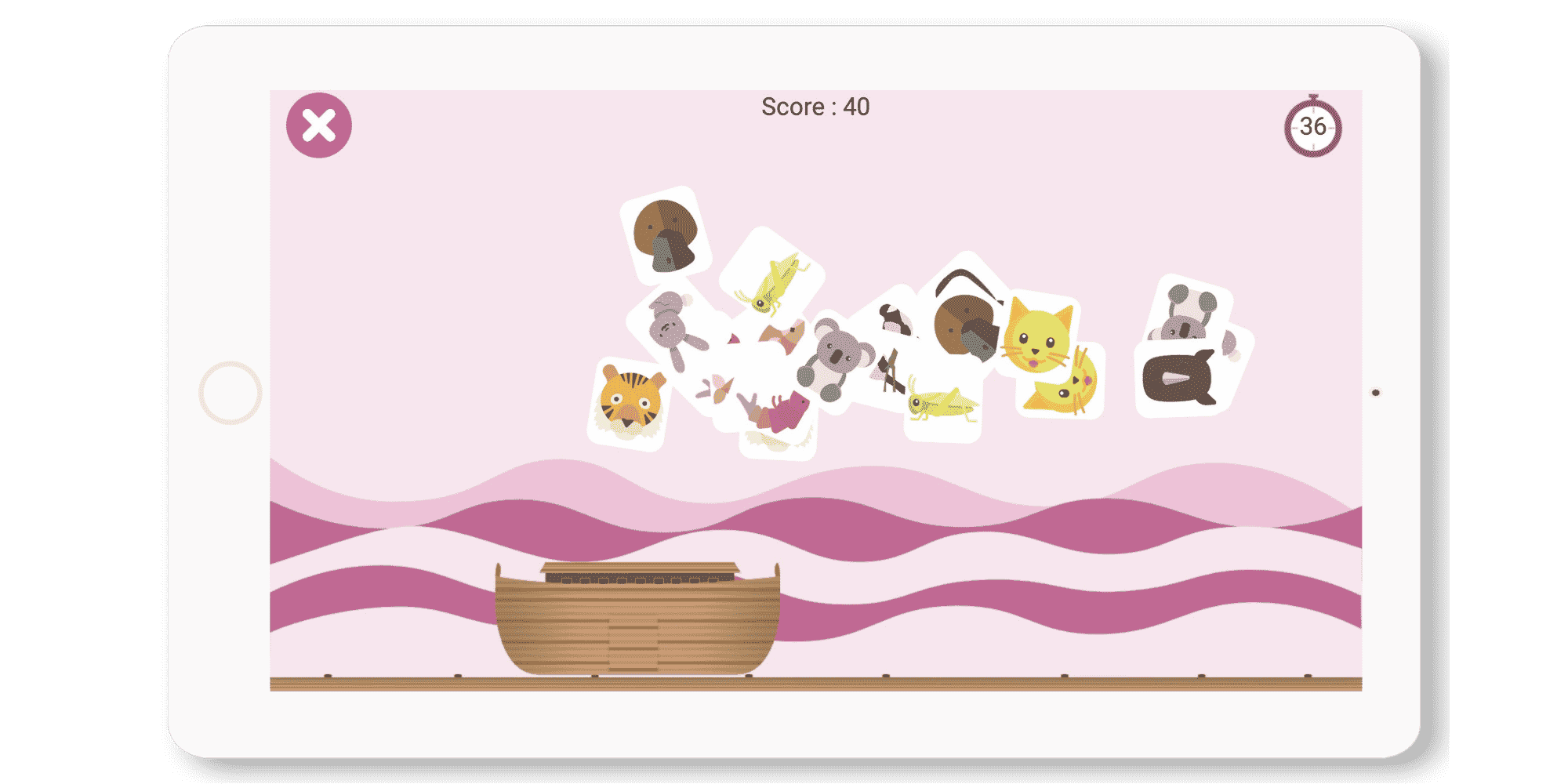
Once identified, the person must use hand-eye coordination and finger motor skills to select the correct animals and drag them to the arch.
You can ask to pick up the first animal with one finger and the second animal with another finger. You can also stimulate fine motor skills (using only the index finger, then the middle finger for example) or bimanual skills (using only the left hand first, then the right).
Panurge
Minimize the area of the sheep as much as possible and get as many sheep as possible.
In this game you have to use finger motor skills, but also other cognitive functions.
To draw the lines on the screen, you can stimulate finger mobility and eye-hand coordination because the person has to slide his or her finger across the screen in the right direction to make it appear. This is why the game can also be used by someone with reduced finger motor skills.
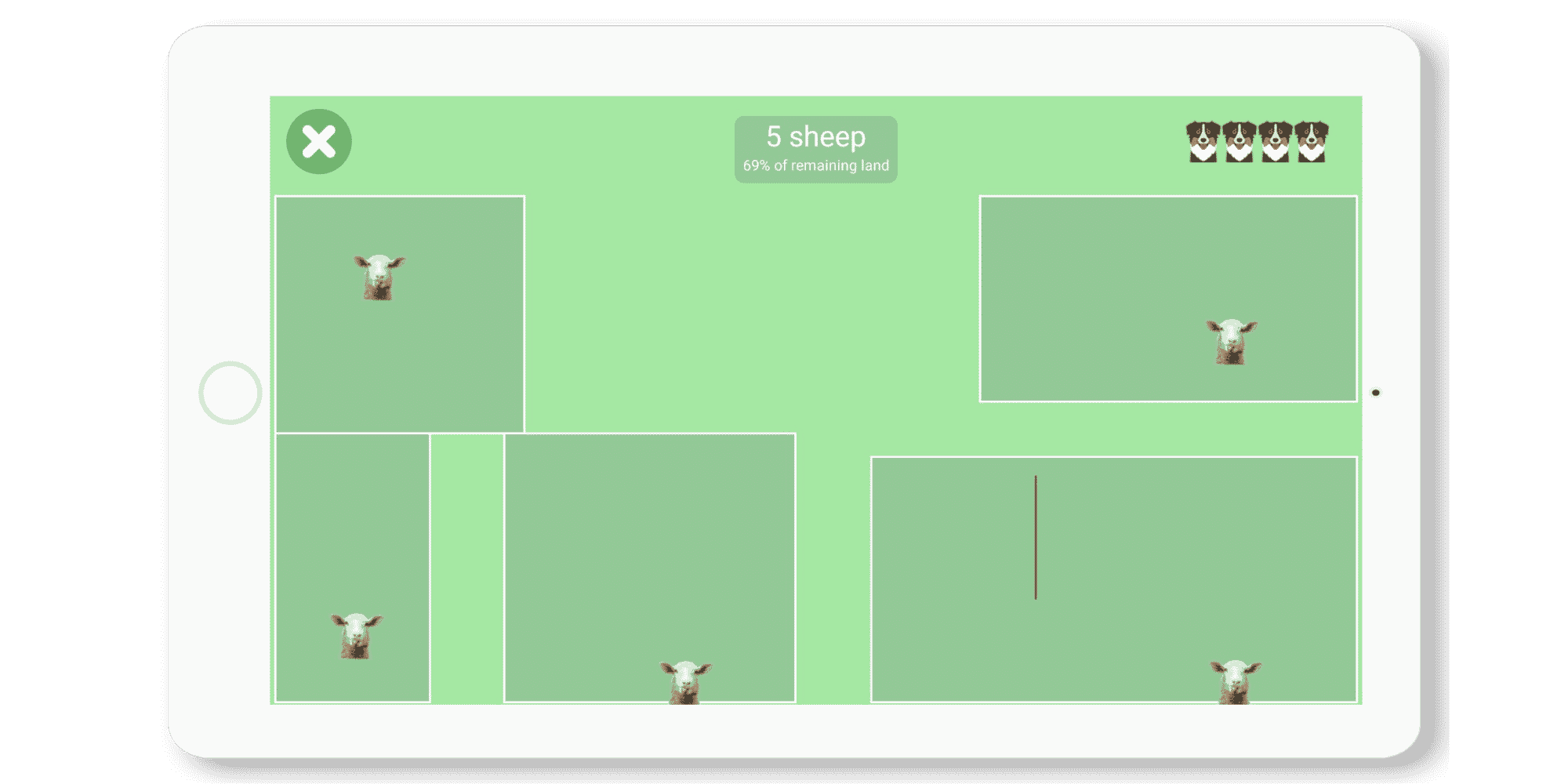
In addition, this game also stimulates attention since the lines drawn must not touch the sheep. You have to be careful to draw the line at the right time and in the right place.
To choose where to draw the line, you also stimulate visual perception and spatial construction as the sheep move in the frame. The person must then anticipate the trajectory of the sheep.
03.
STROKE AND BEHAVIOR
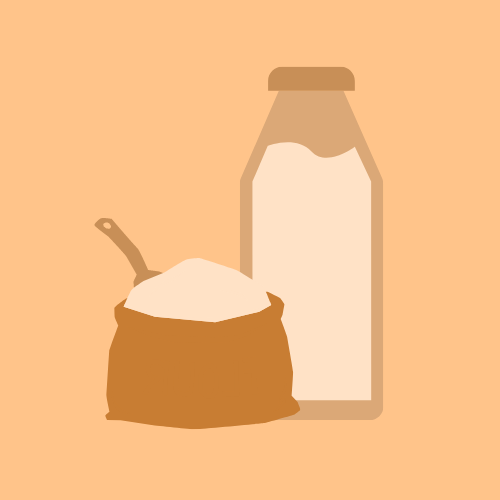
Granny Cooks

Hunting Intruders
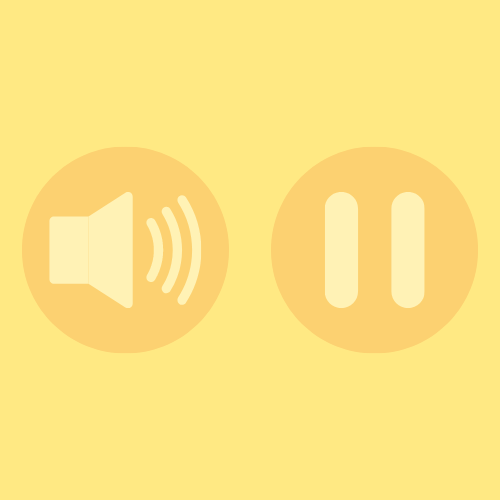
The Musical Ear
STROKE AND BEHAVIOUR
Stroke can cause behavioral difficulties, and interpersonal relationships become more difficult and anxiety-provoking. It is therefore very important for the person and their family to maintain a positive relationship.
The Clint app helps create and maintain a connection with the person who has suffered a stroke.
Games are a soothing and fun activity that is enjoyable to share. The person can express their emotions in a reassuring environment and can learn to control them or find strategies to calm themselves.
The most common games used for bonding are:
Granny Cooks
Remember the steps in the recipe or the ingredients in the recipe.
With this game, you can stimulate discussion and the recipe can be the subject of conversation.
You can find the typical recipe of your Christmas meal and bring back memories and share the moment together.
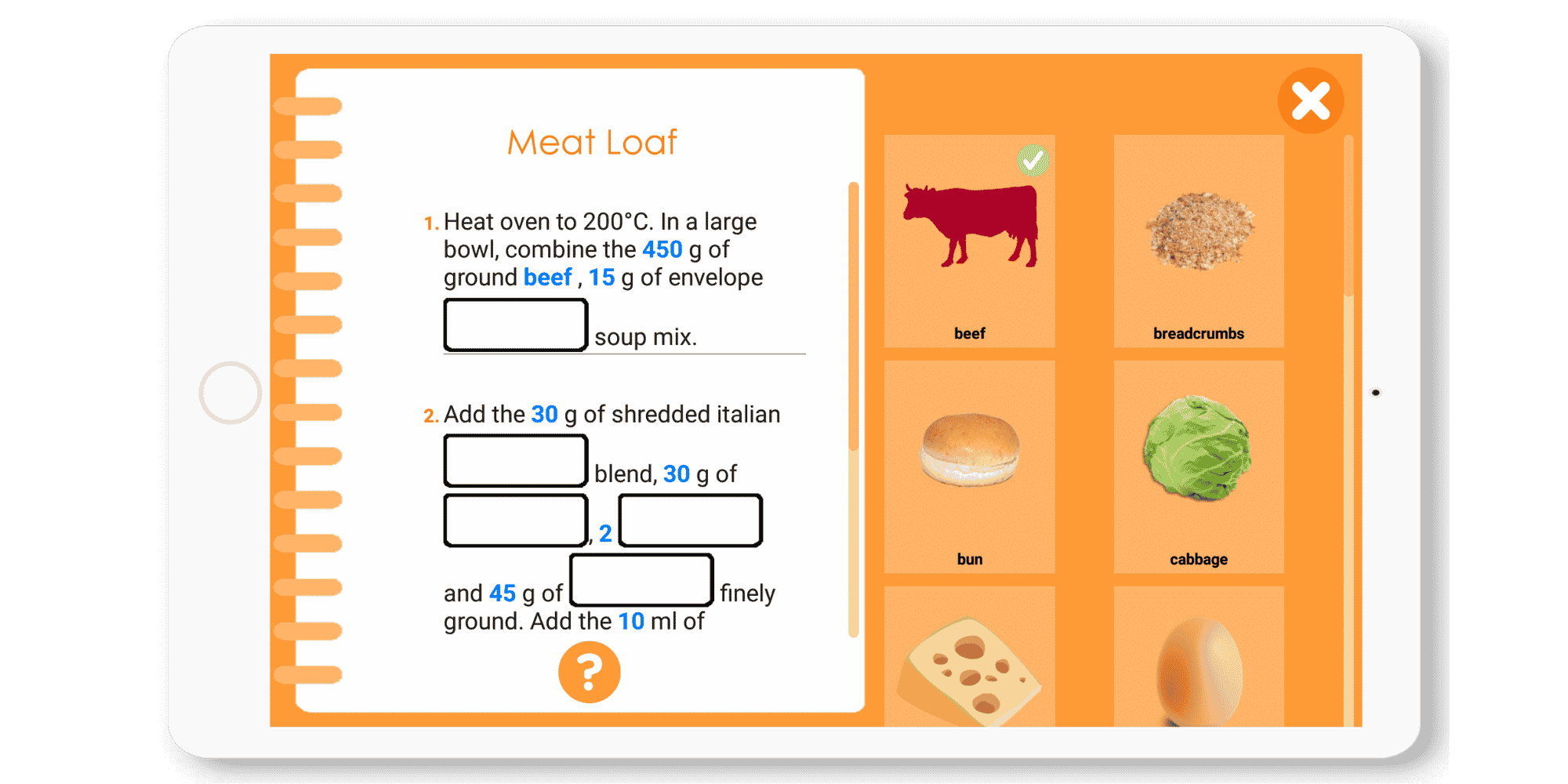
This game provides a fun and calming activity to share and maintain a positive relationship.
You can play together by taking turns saying an ingredient, for example. Sharing can be during the game or afterwards, in the form of a discussion.
Moreover, thanks to this game, you also stimulate memory and language.
The Musical Ear
Listen and recognize the sounds or music provided.
In this game, you have 3 modes to play, and everyone can choose the mode they prefer to stimulate the relationship in different ways:
- Recognize sounds from everyday life,
- musical instruments,
- animals,
- or music.
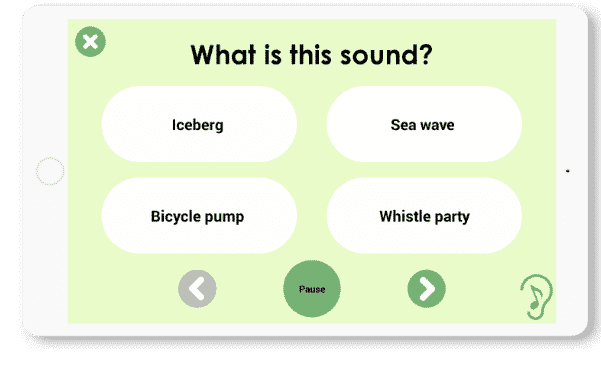
You can create quizzes for stimulation, you can dance to the music before naming the artist, or sing the song to see if you remember all the words.
In addition, you can start a conversation through the different songs (discuss music, concerts or singers).
With this game, you stimulate cognitive functions such as attention, language and memory.
Clint also offers multiplayer games to share the game more directly with the person with stroke:
- 2 players: the screen is divided in two and each player plays at his own pace,
- buzzer: the screen is divided in two and the first to answer wins a point,
- online: challenge other people, everyone plays on their own tablet.
Hunting Intruders
Find the intruder between the words.
Through this game you can share the digital tool and the activity, to maintain a more direct relationship with the person with stroke.
In this game, each person plays at their own pace and the result is displayed at the end, so there is a winner. You can stimulate the management and control of emotions.
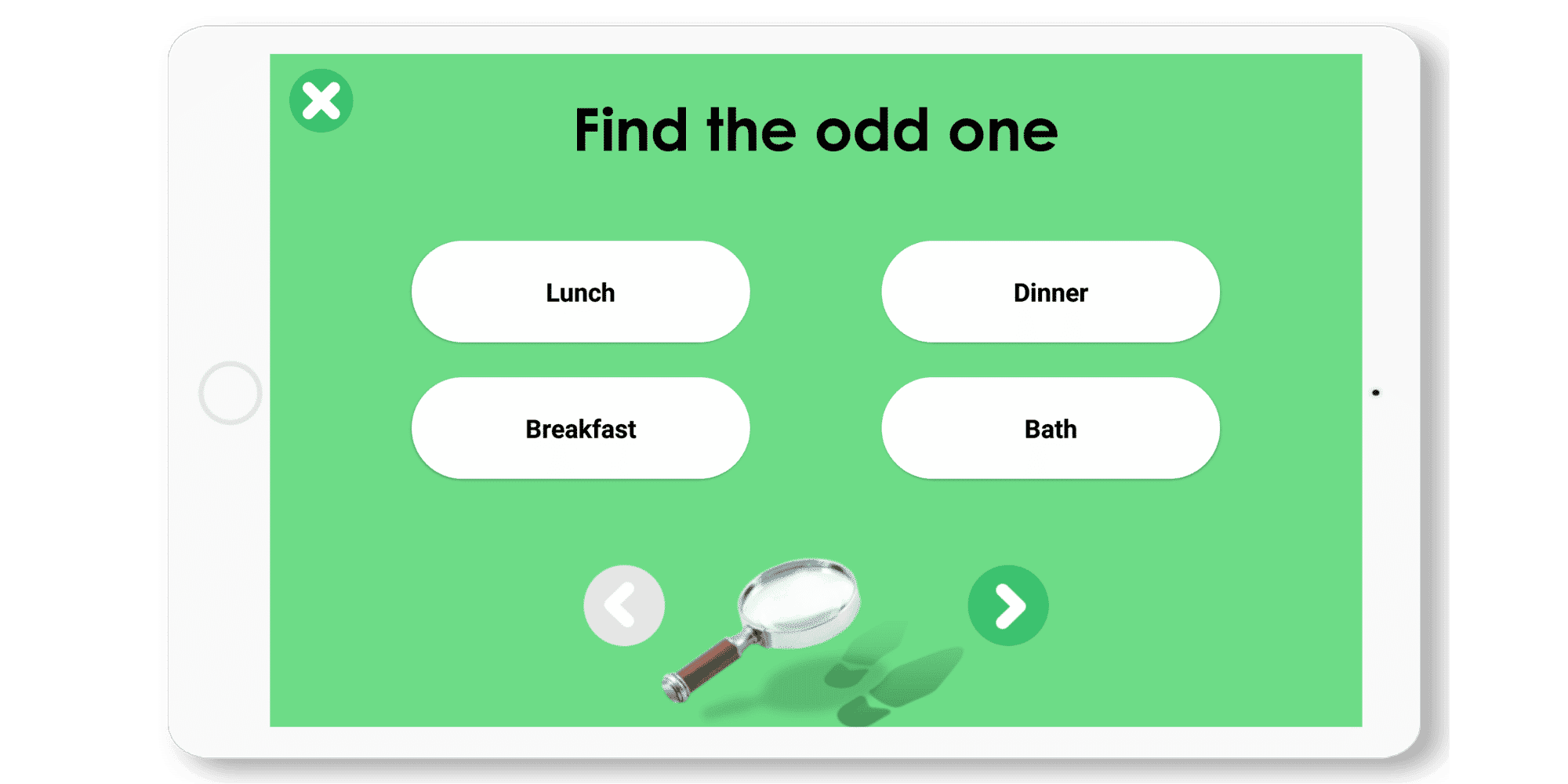
For example, if the person has a wrong answer or loses the game, they may feel frustrated. Thanks to the support, the tablet allows the person to replay the game and take revenge, which will help the person to manage his emotions.
In addition, with this game, you can stimulate language and attention.
The Walker
Place the pieces to create a path between the walker and the flag.
This game can be played online and allows you to maintain contact with the person who has had a stroke from a distance (if you don’t live in the same city or if you don’t have the possibility to travel regularly).
In addition, the person will know that you are thinking about them and that they are important to you, so you can maintain a positive relationship.
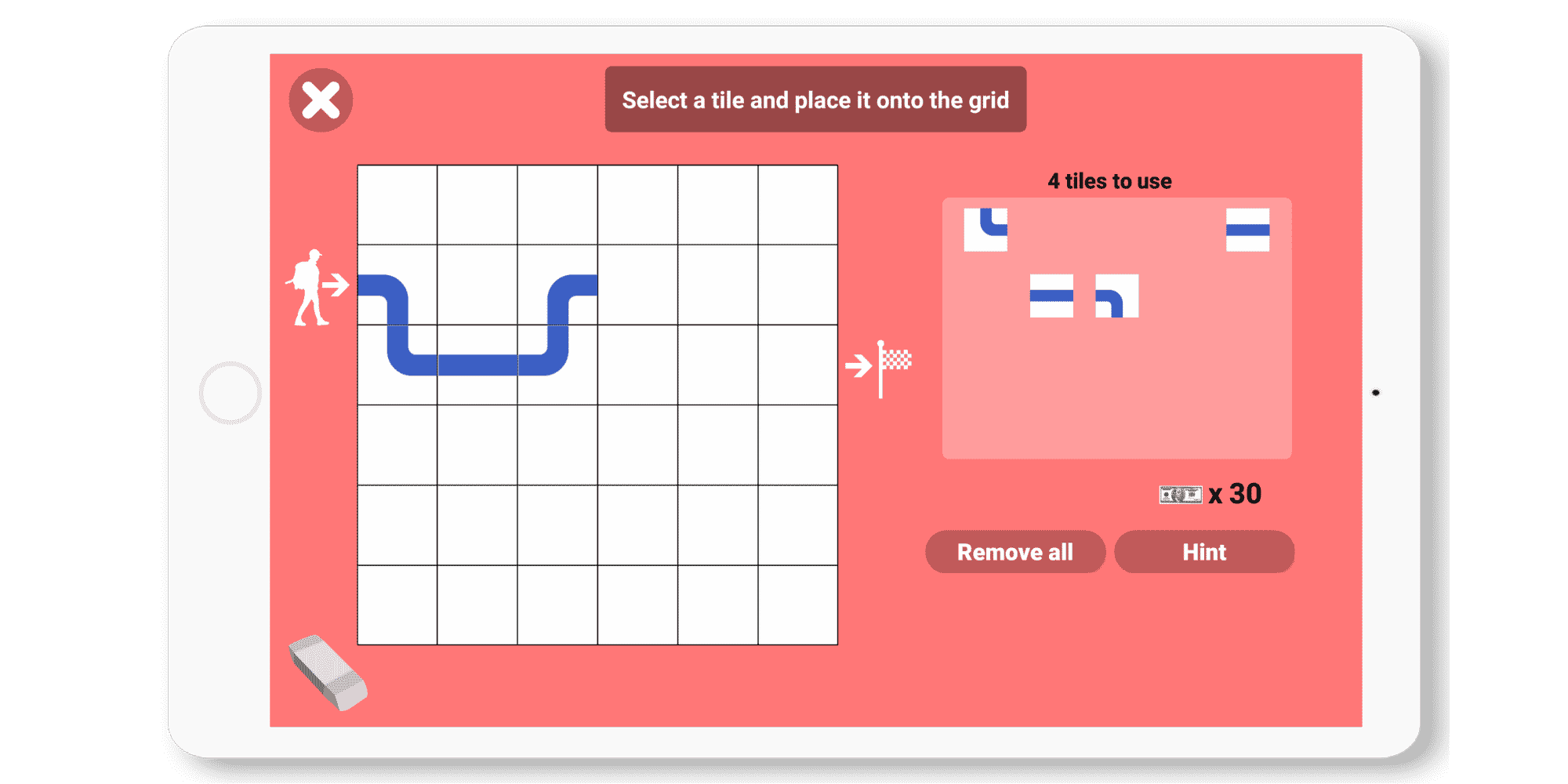
The game may lead to discussions the next time you see the person.
Finally, thanks to this game, you also stimulate other cognitive functions such as visual perception, finger mobility or planning.
04.
A PERSONALIZED TRAINING PROGRAM
A personalized training program is essential after a stroke because it allows you to target the specific needs of each individual, promoting optimal recovery and improved quality of life.
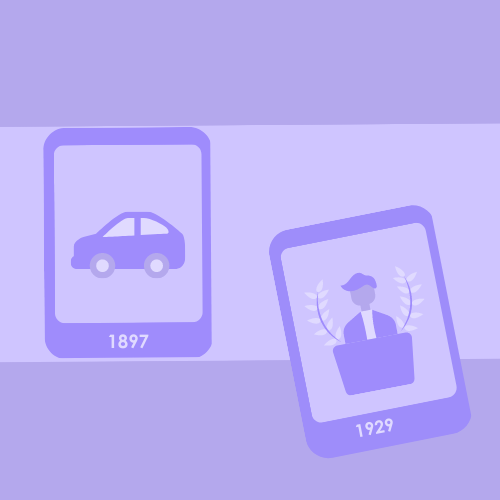
A card a Date
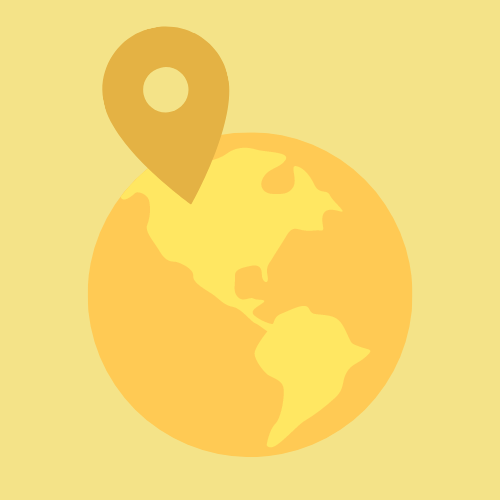
Geography
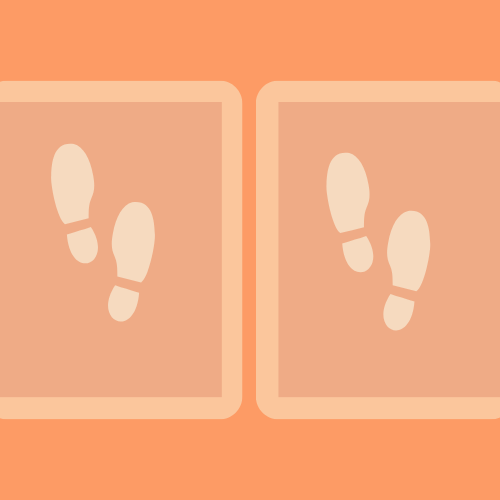
Twins
Clint accompanies you in your training with a specific program over 4 weeks. Every week you will find sessions and rest days, with games to do. Just 15 minutes of activity is enough to improve!
In addition, to support you in the best possible way, the program offers advice on how to adapt the exercise, make it more fun or share it with your loved ones.
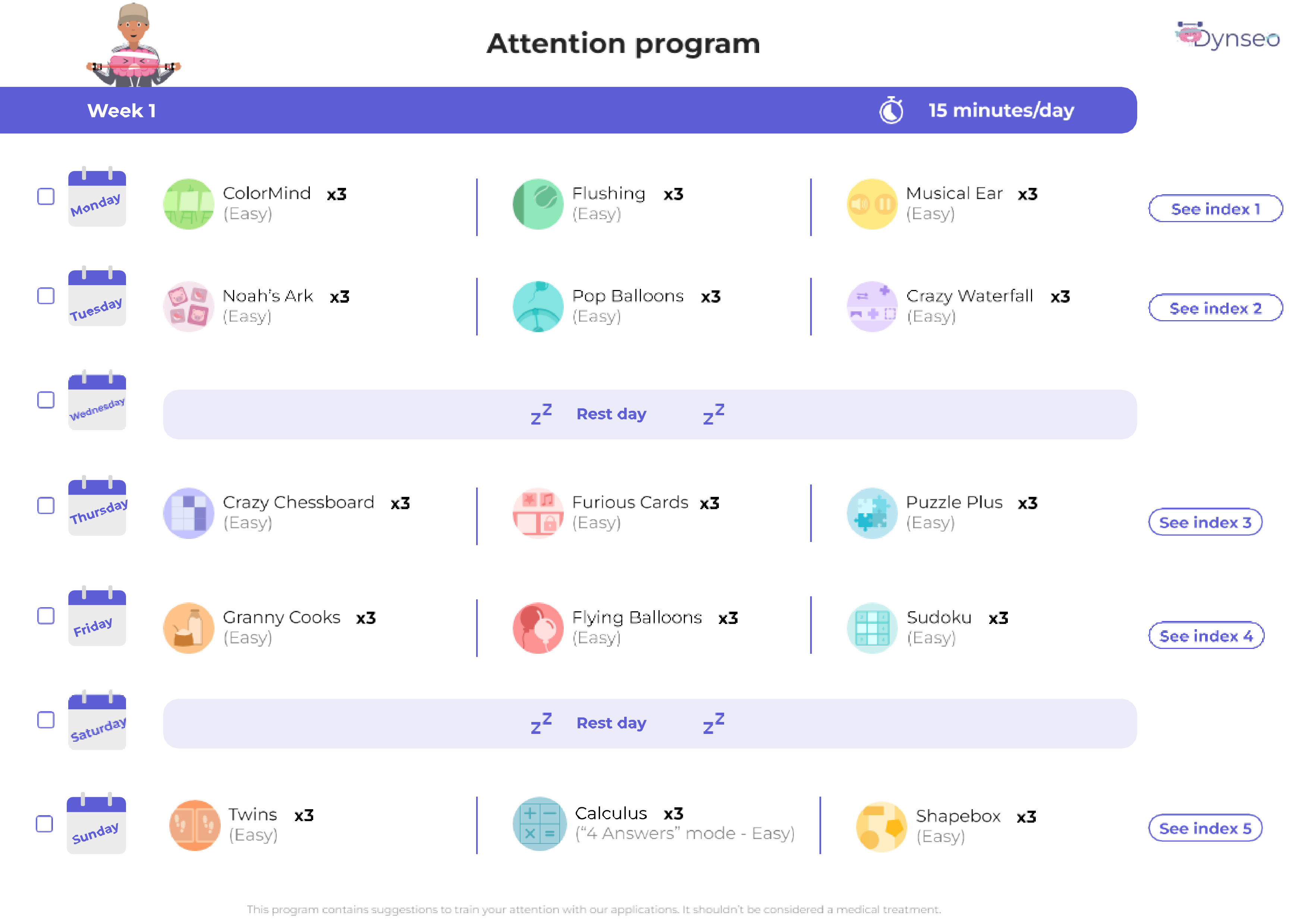
At the end of each program, you will find pages explaining the importance of each game offered. You will discover the definition of cognitive function as well as its different components.
Clint offers practical advice to improve your cognitive functions (attention, memory, language, etc.) according to your needs. You‘ll also find suggestions for adapting the games.
A card a Date
In this game, the person has to put the events in order.
This game can help boost memory and the ability to organize information chronologically. By engaging in this type of activity, individuals can improve their cognition and ability to trace sequences of events, which is essential for many activities of daily living. In addition, this game offers a fun and engaging approach to working on cognitive rehabilitation after stroke, which can promote motivation and fun in the recovery process.
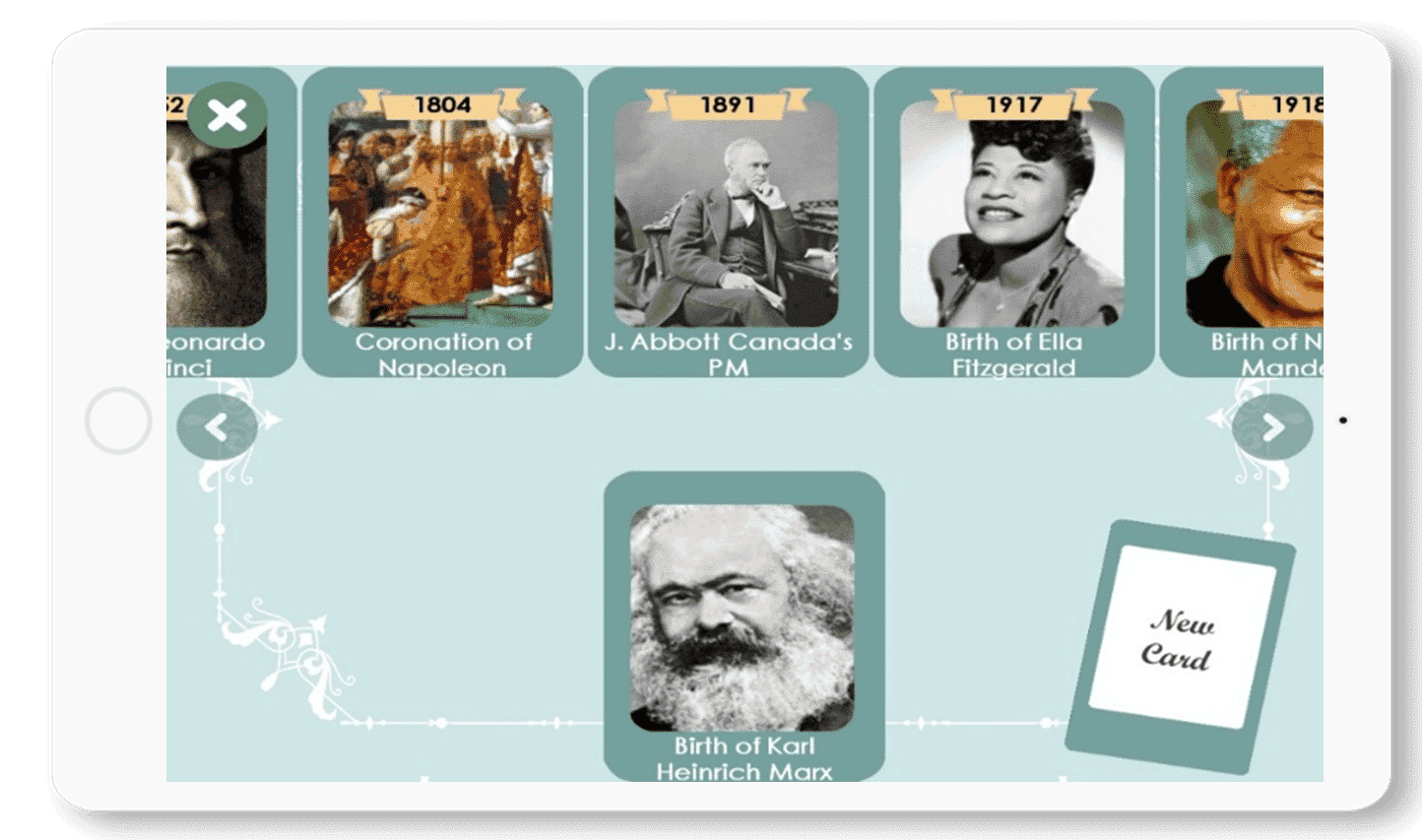
Geography
In this game, the person has to find or name countries or cities.
This game can help improve cognitive abilities, such as spatial memory and visual perception. By practicing identifying countries and locating them on a map, individuals can strengthen their spatial orientation and geographic understanding, which can be beneficial for stroke rehabilitation.
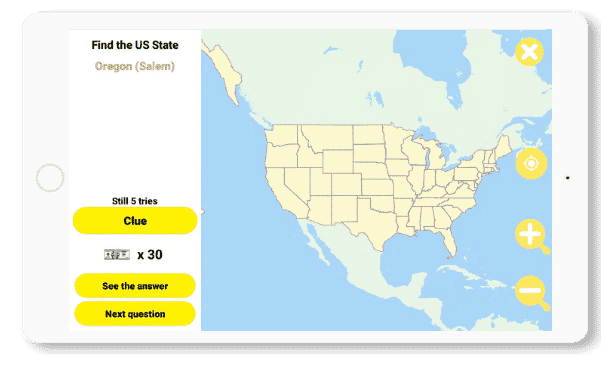
Twins
In this game, the person has to memorize the place of the pairs.
This game helps stimulate memory and concentration, functions often affected by stroke. By identifying and remembering pairs of images, individuals can enhance their ability to retrieve information and maintain their attention.
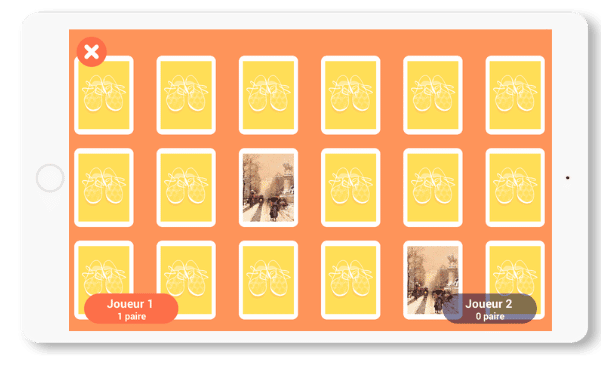
Here are the data sheets of all the games presented, with the cognitive functions stimulated by game
